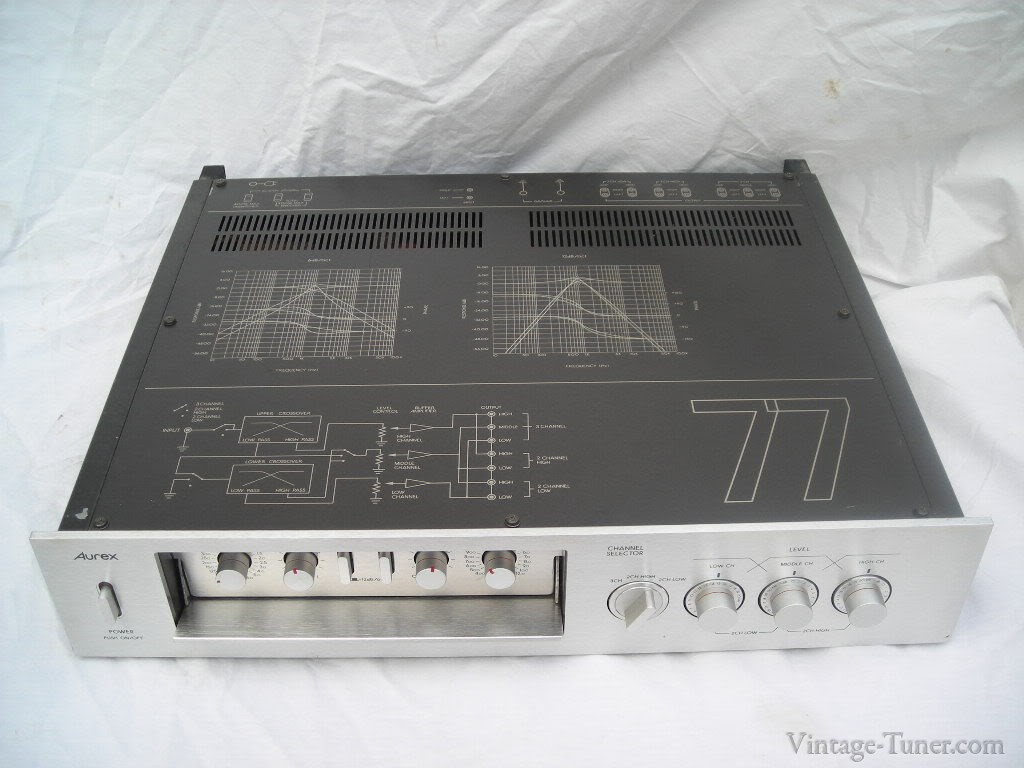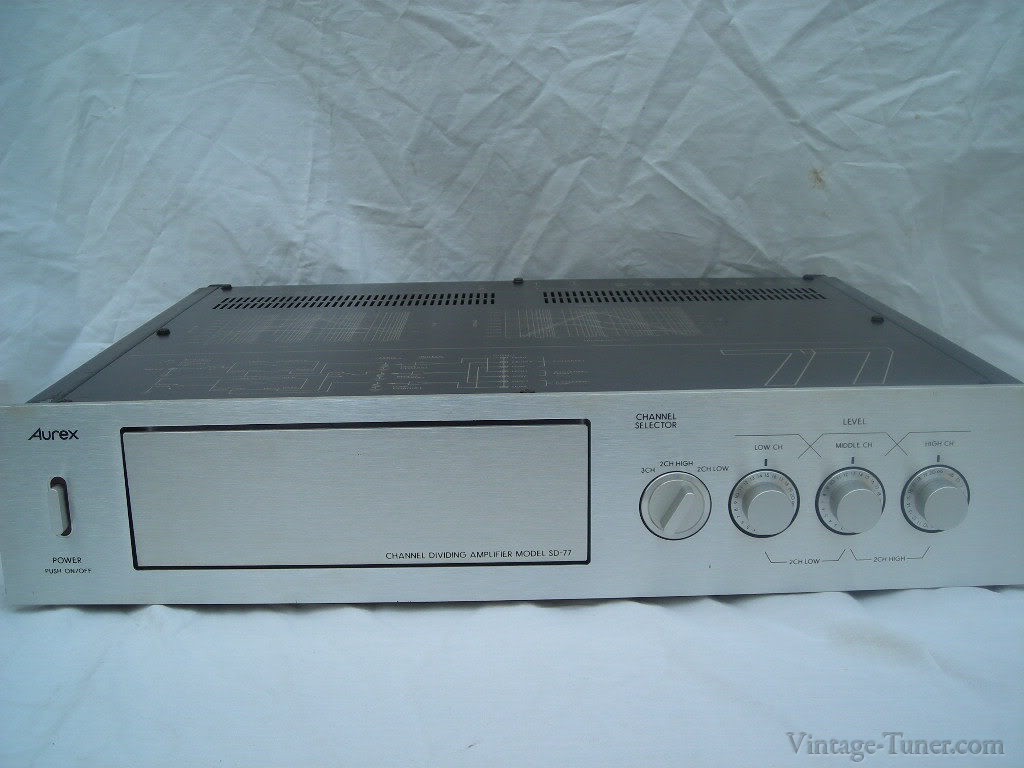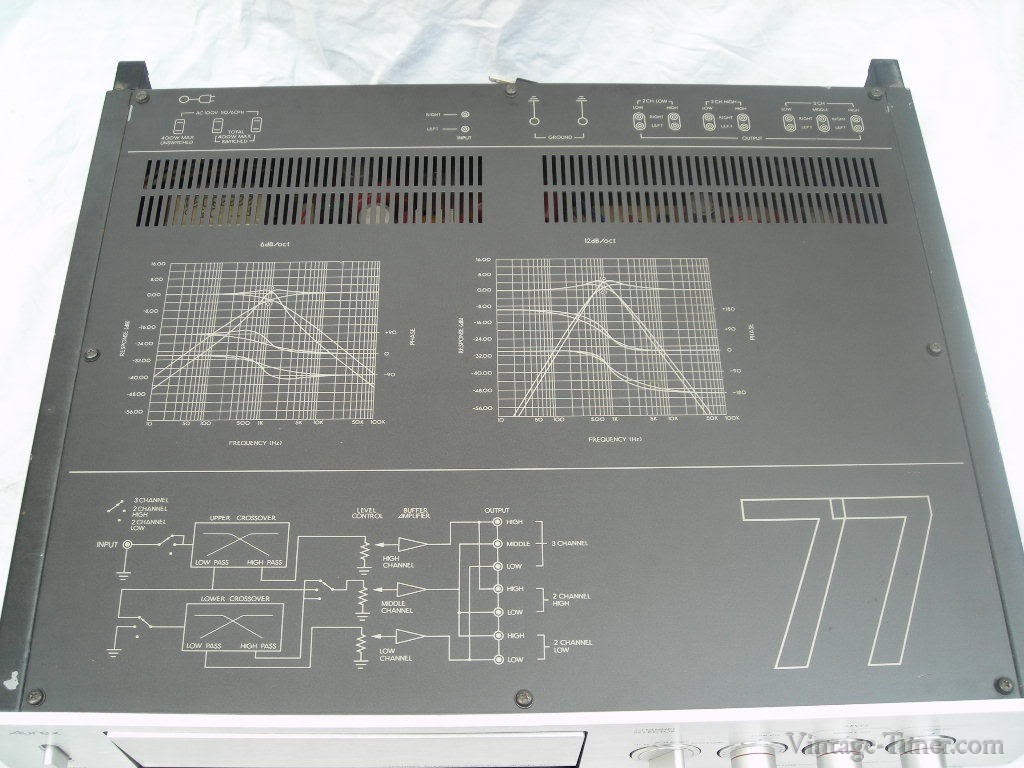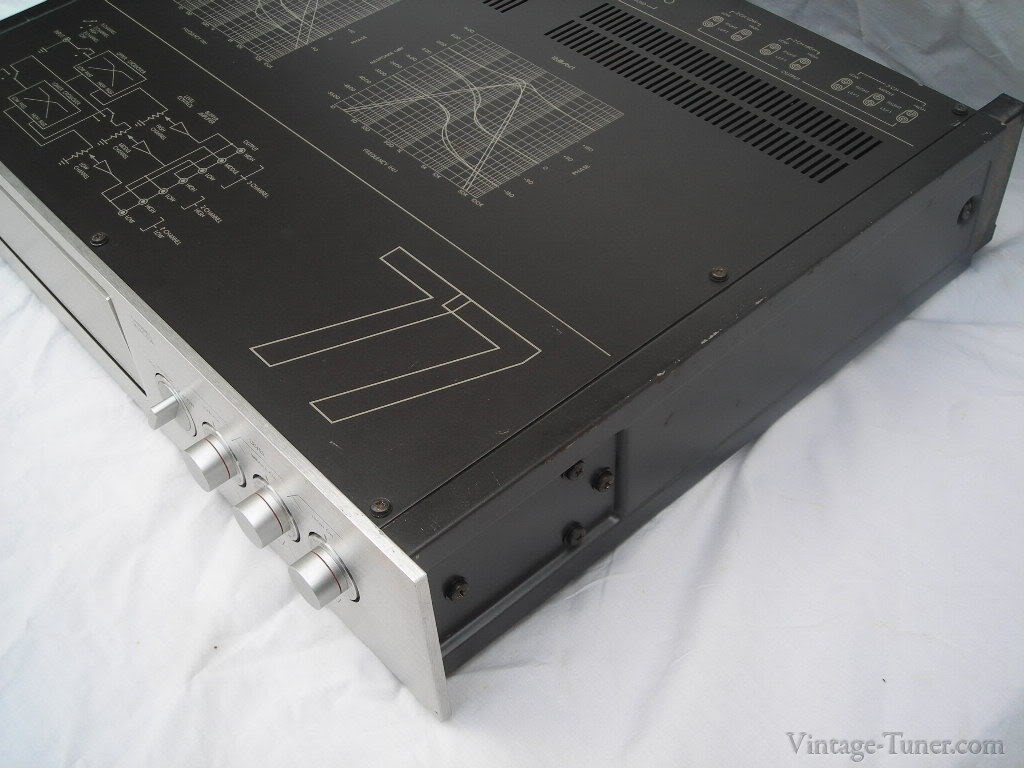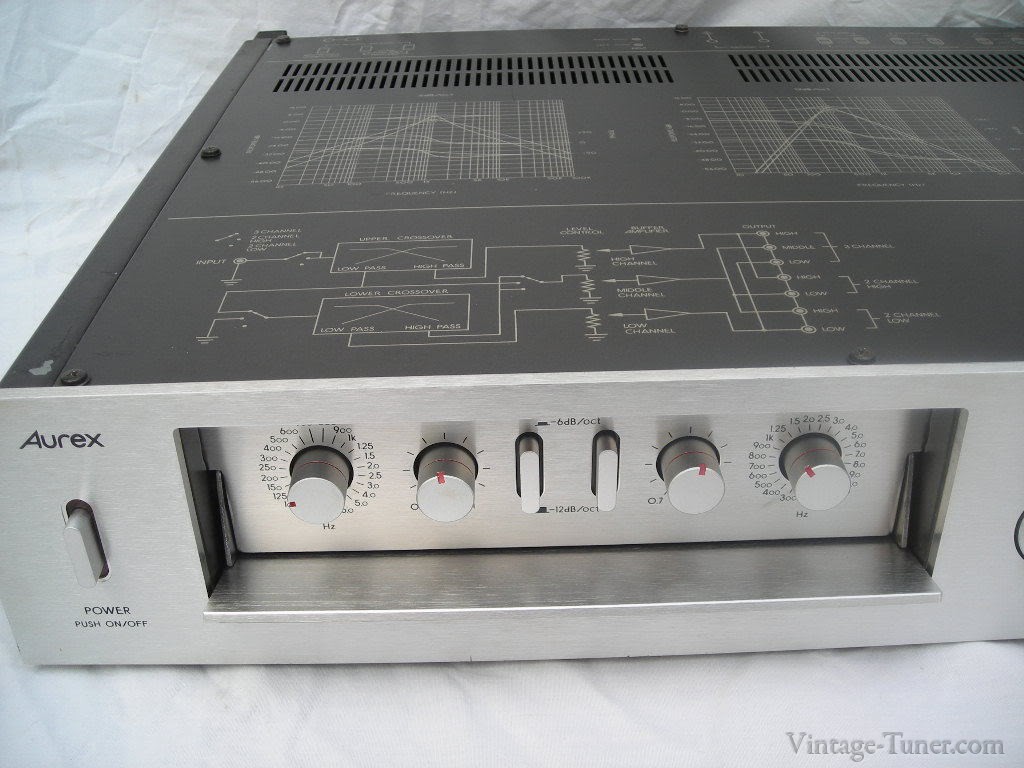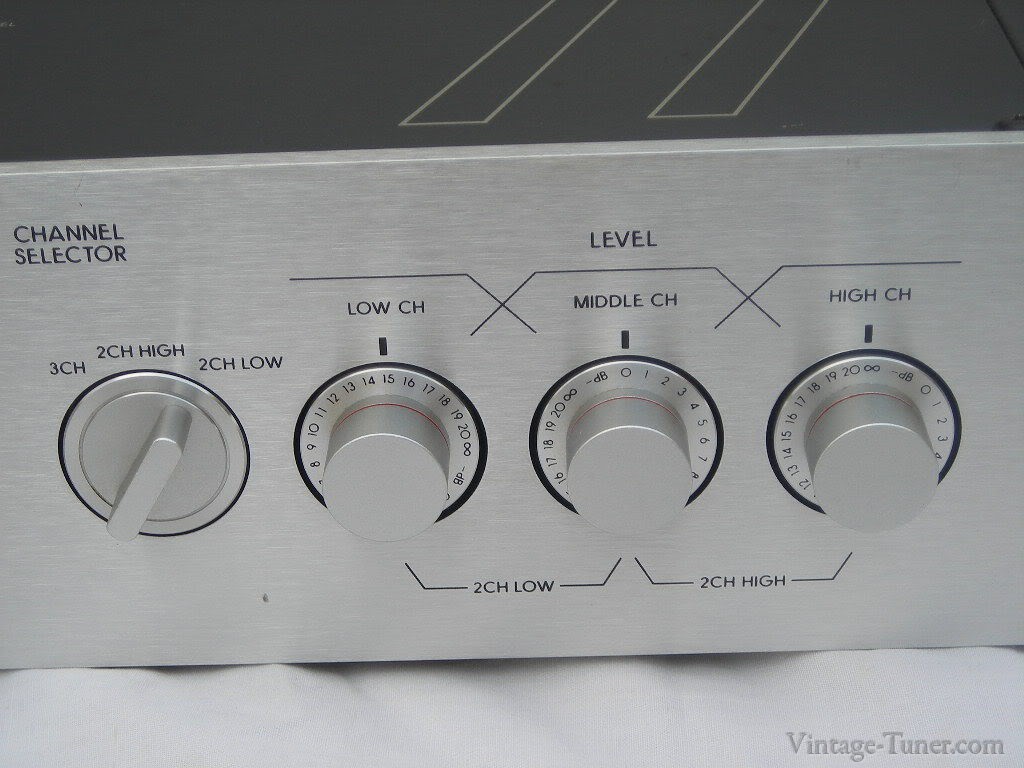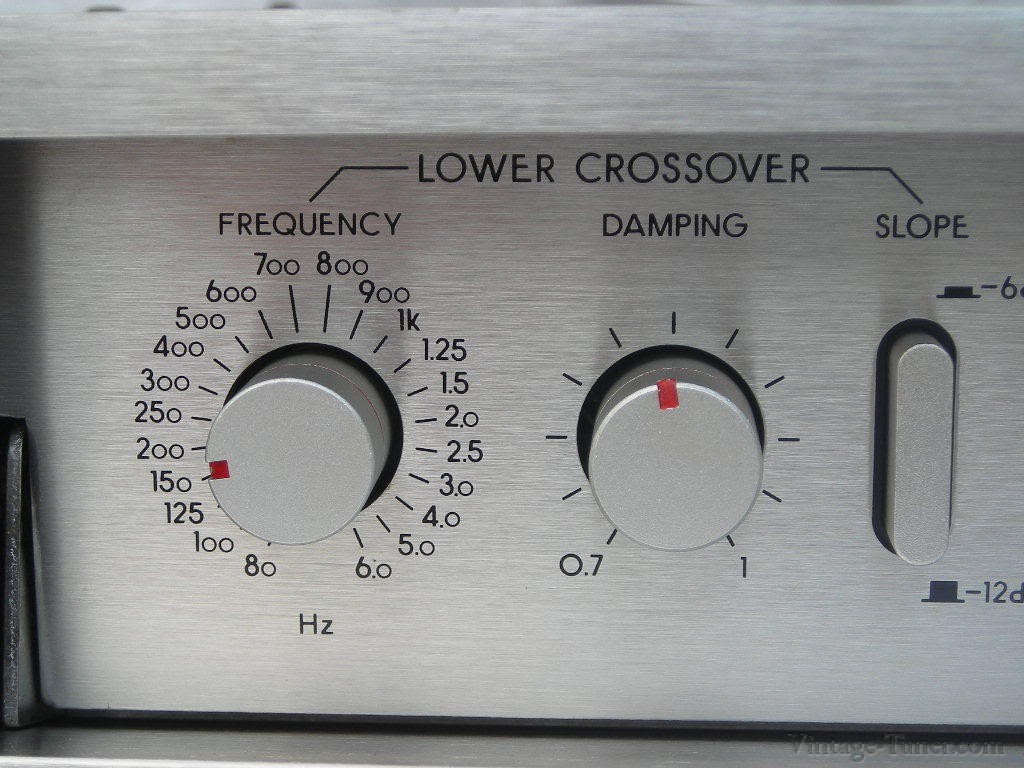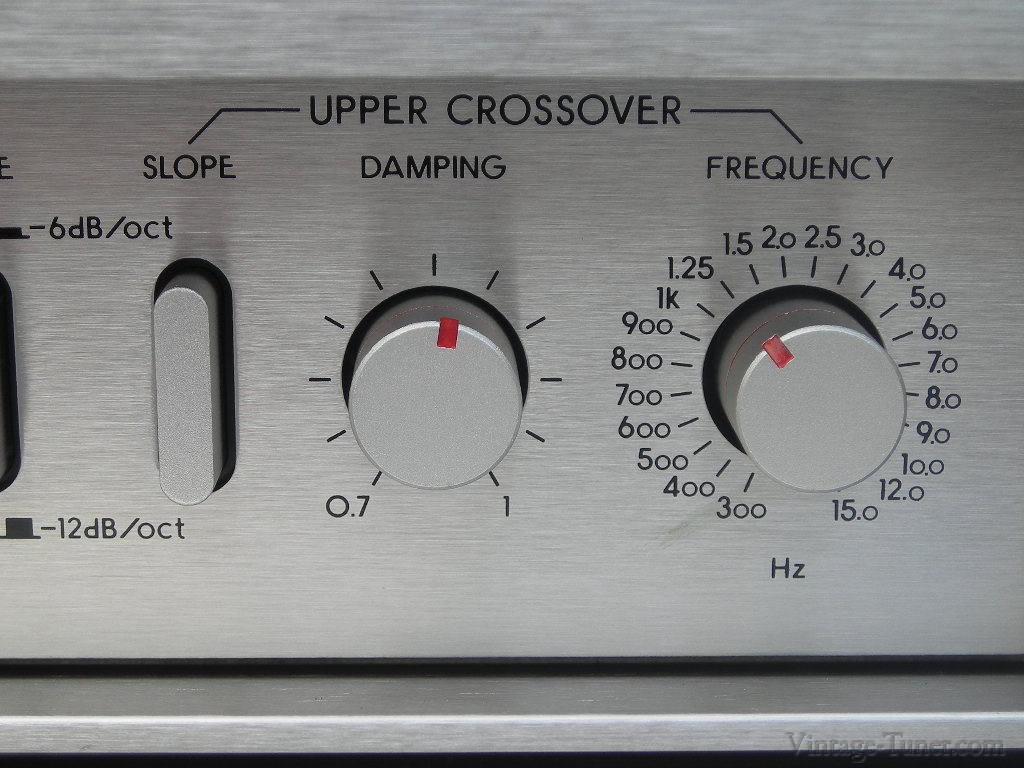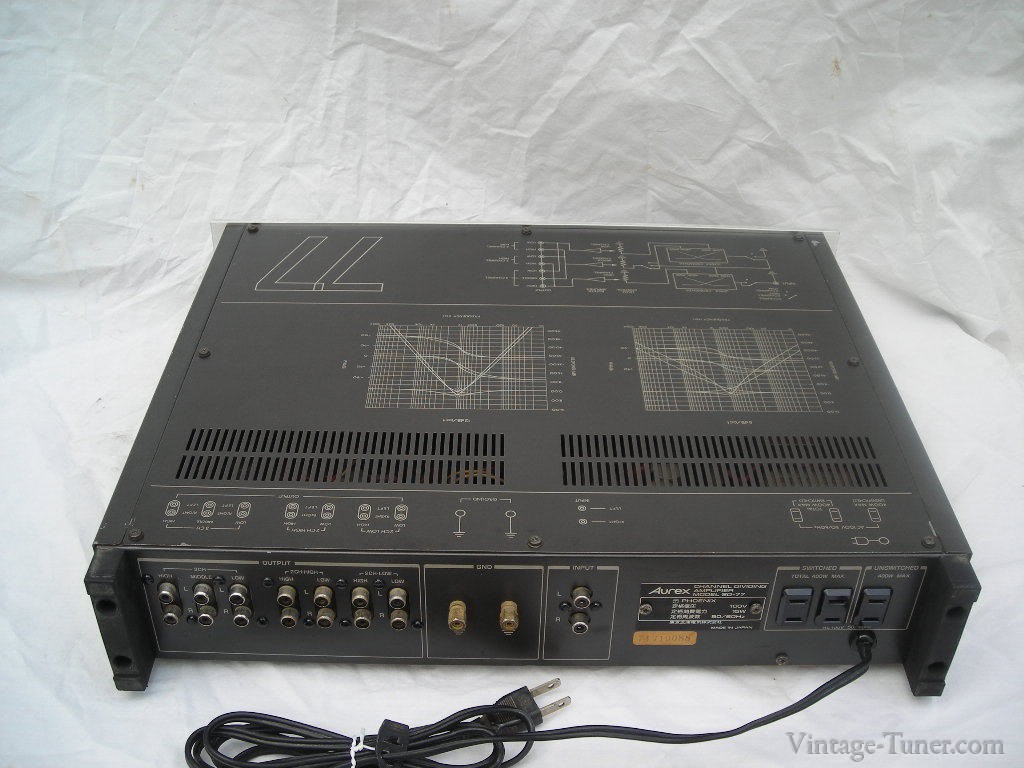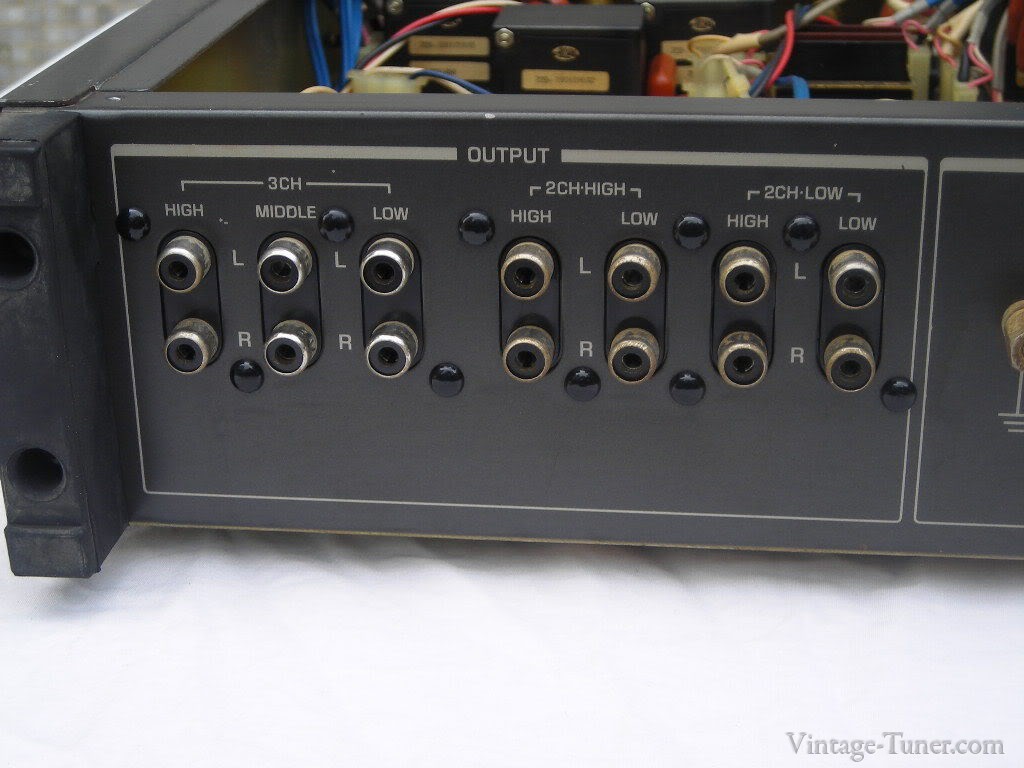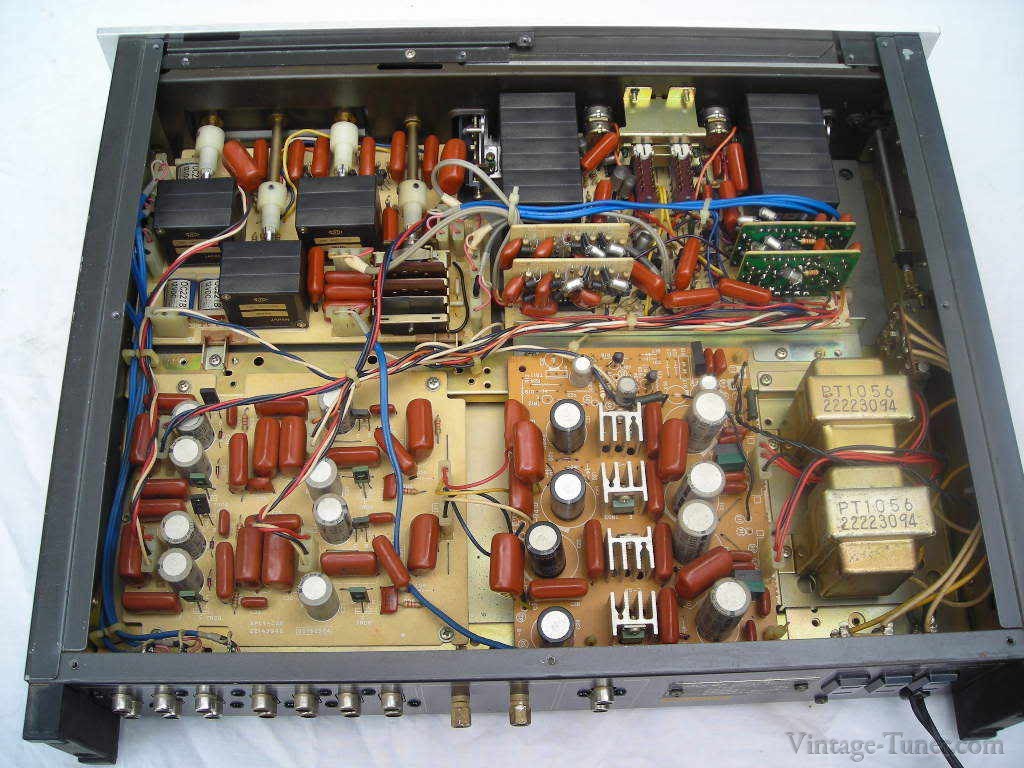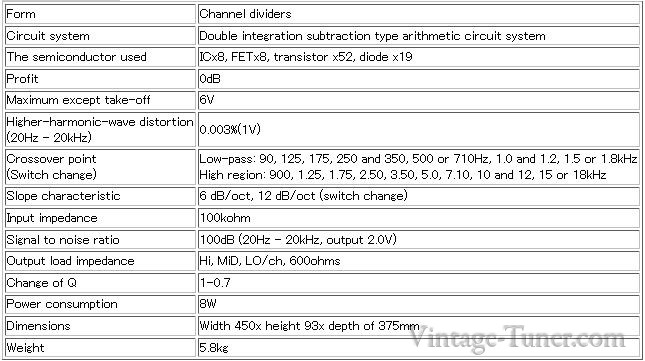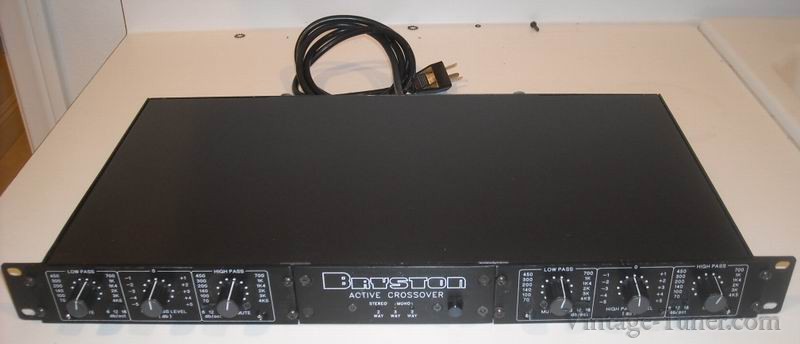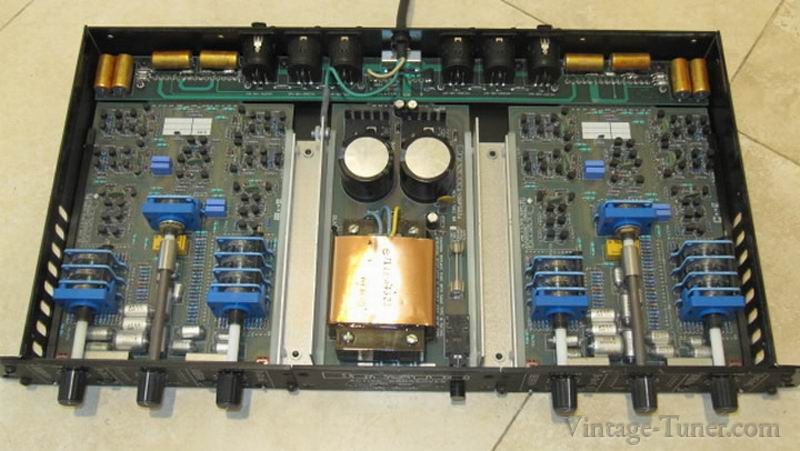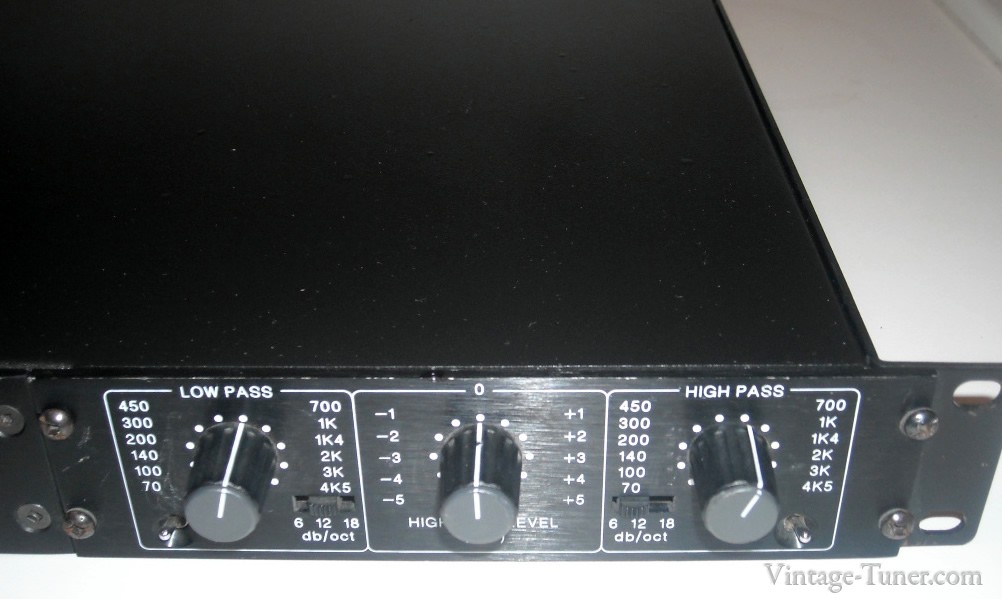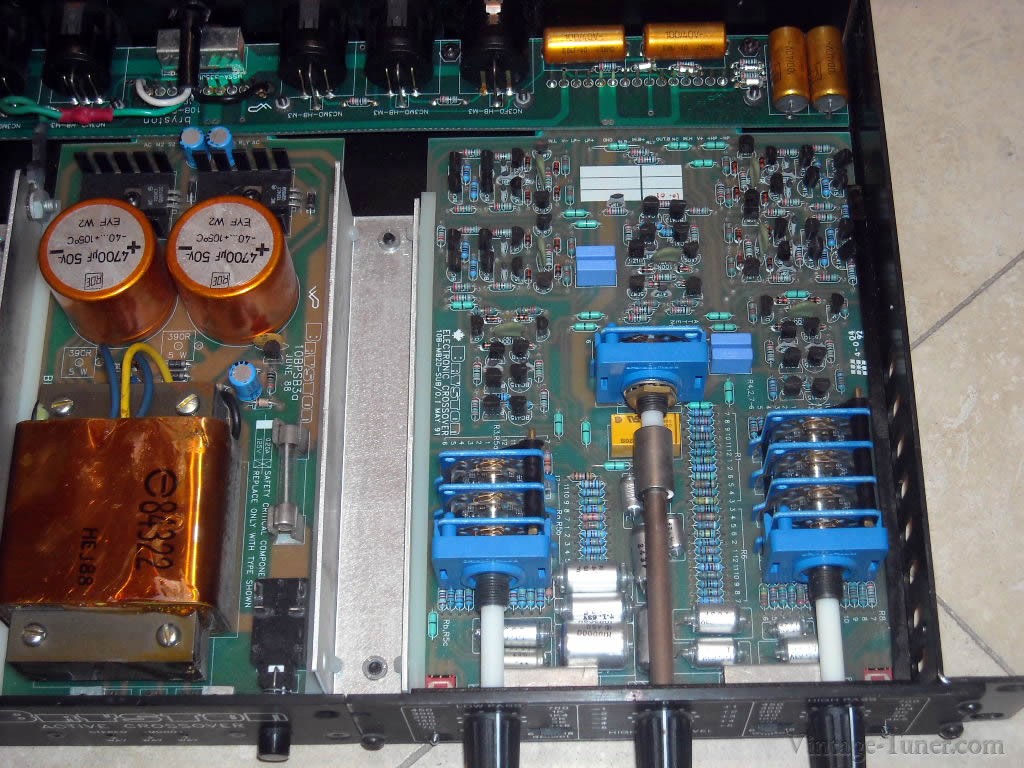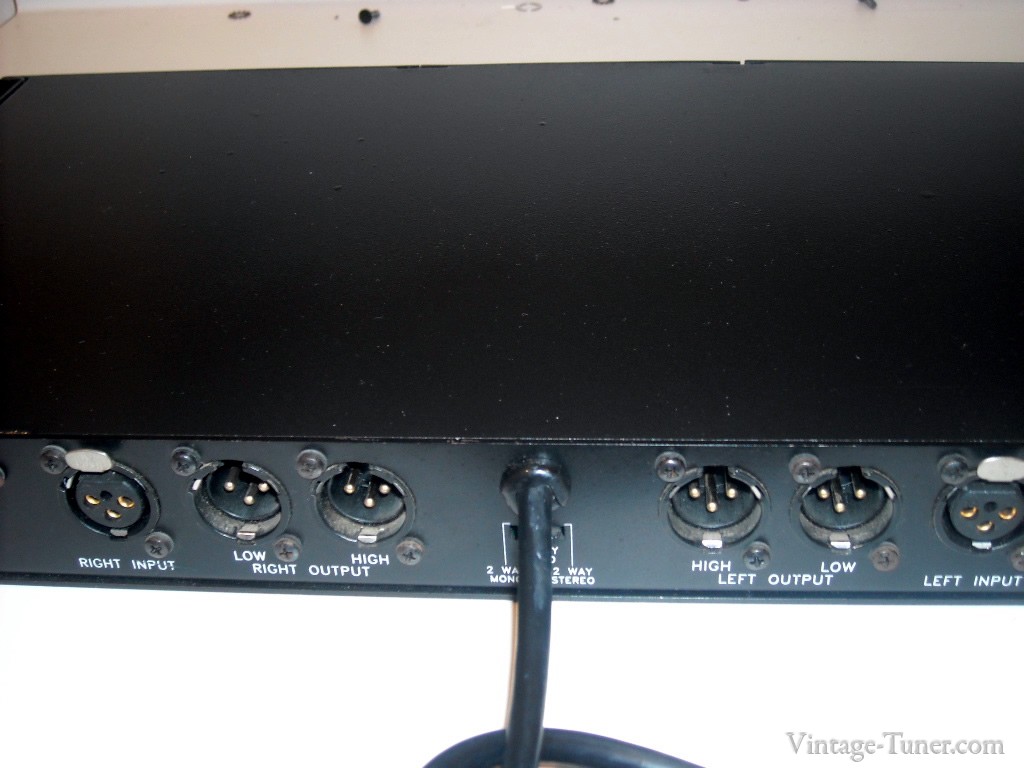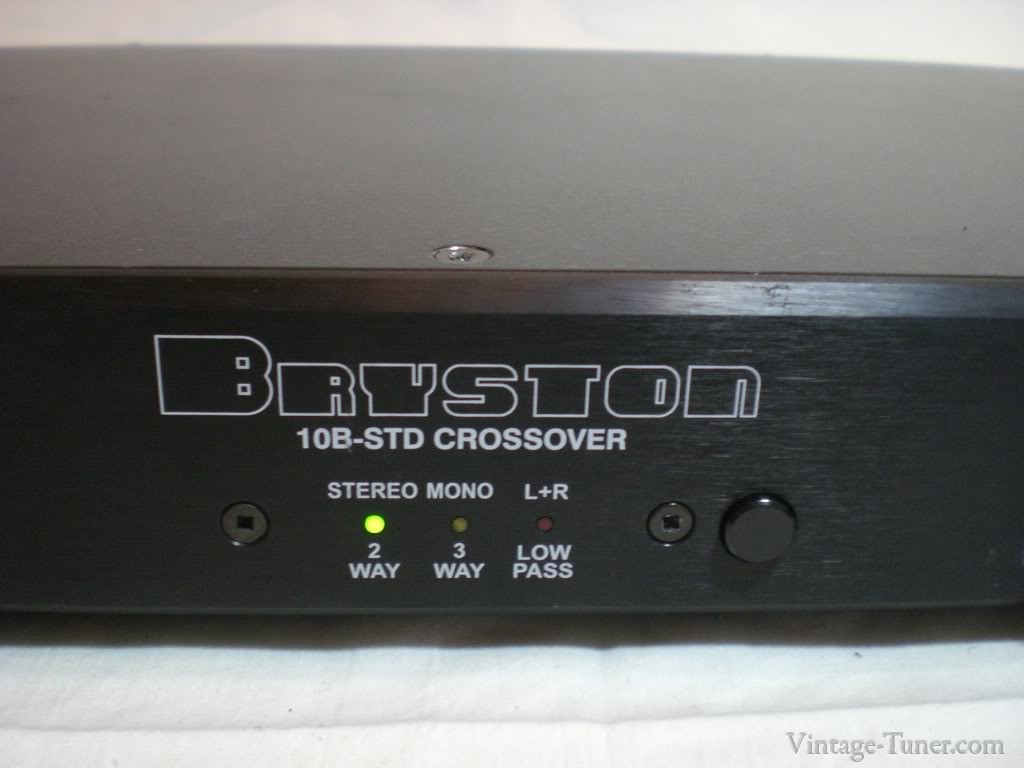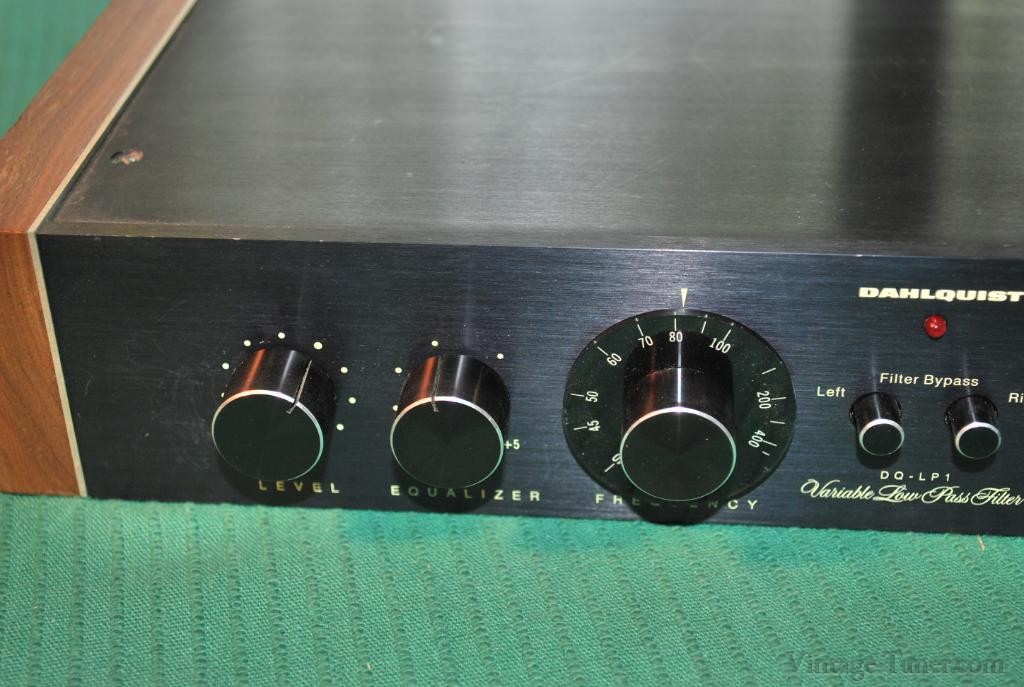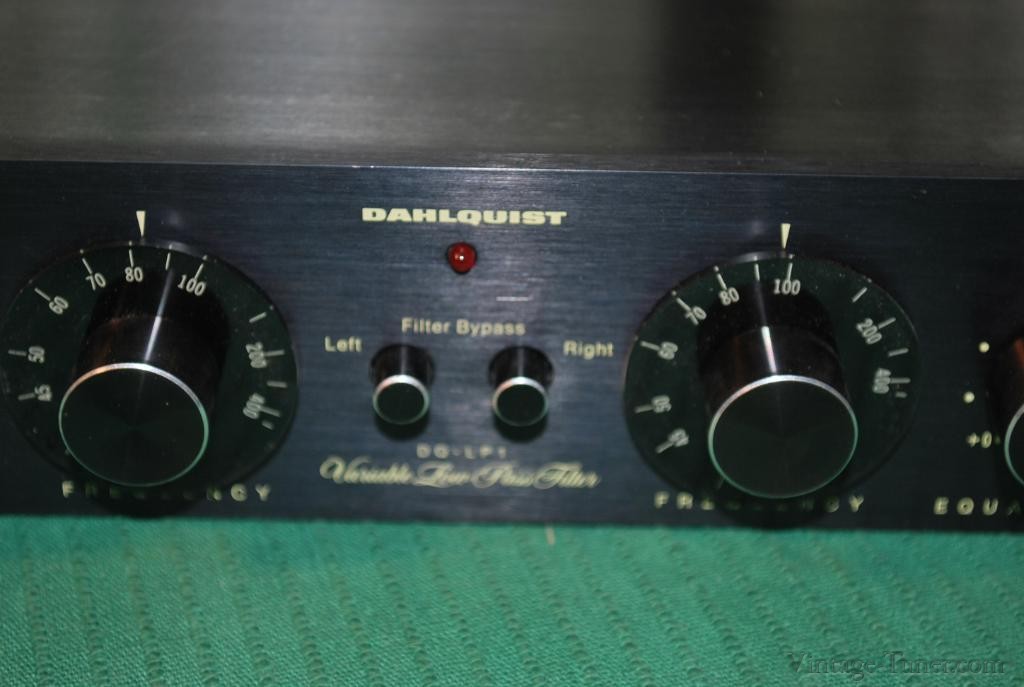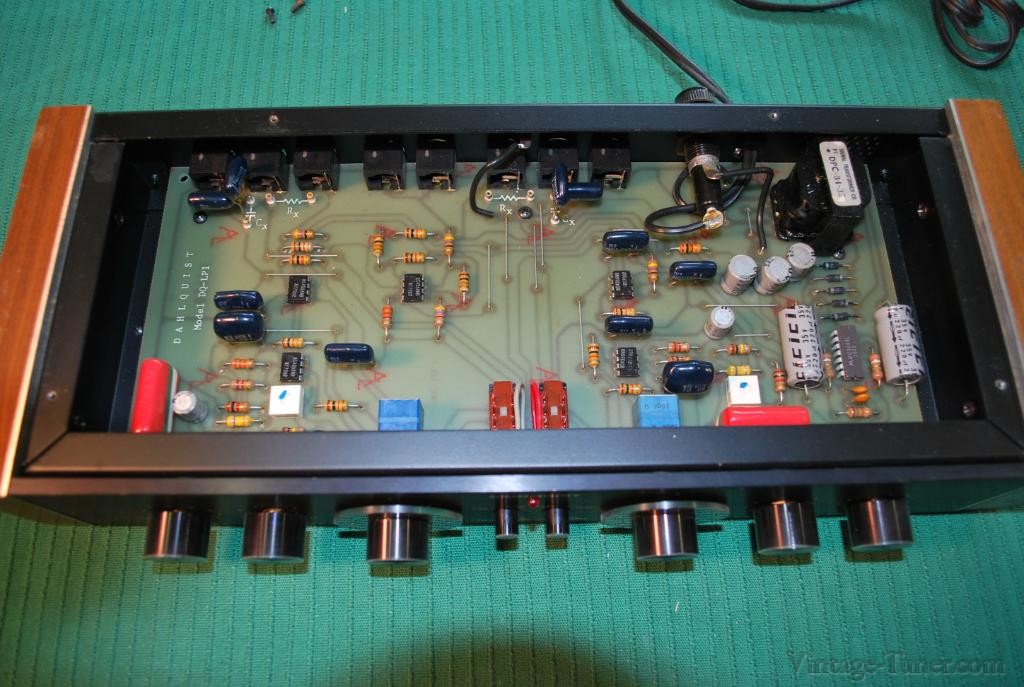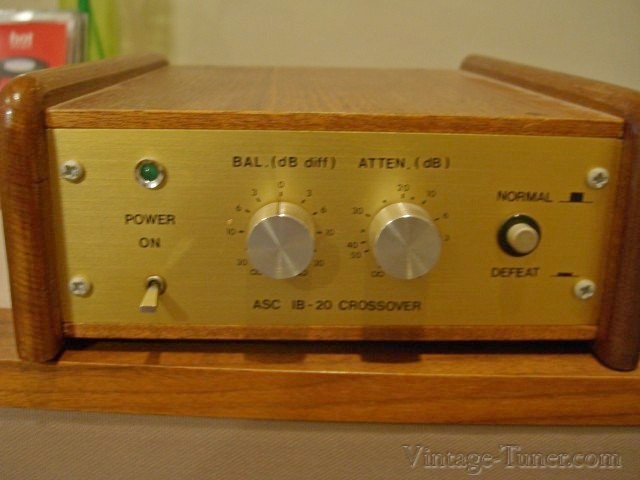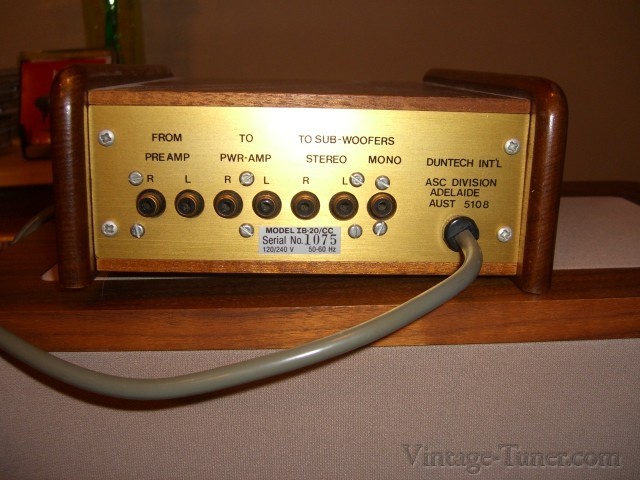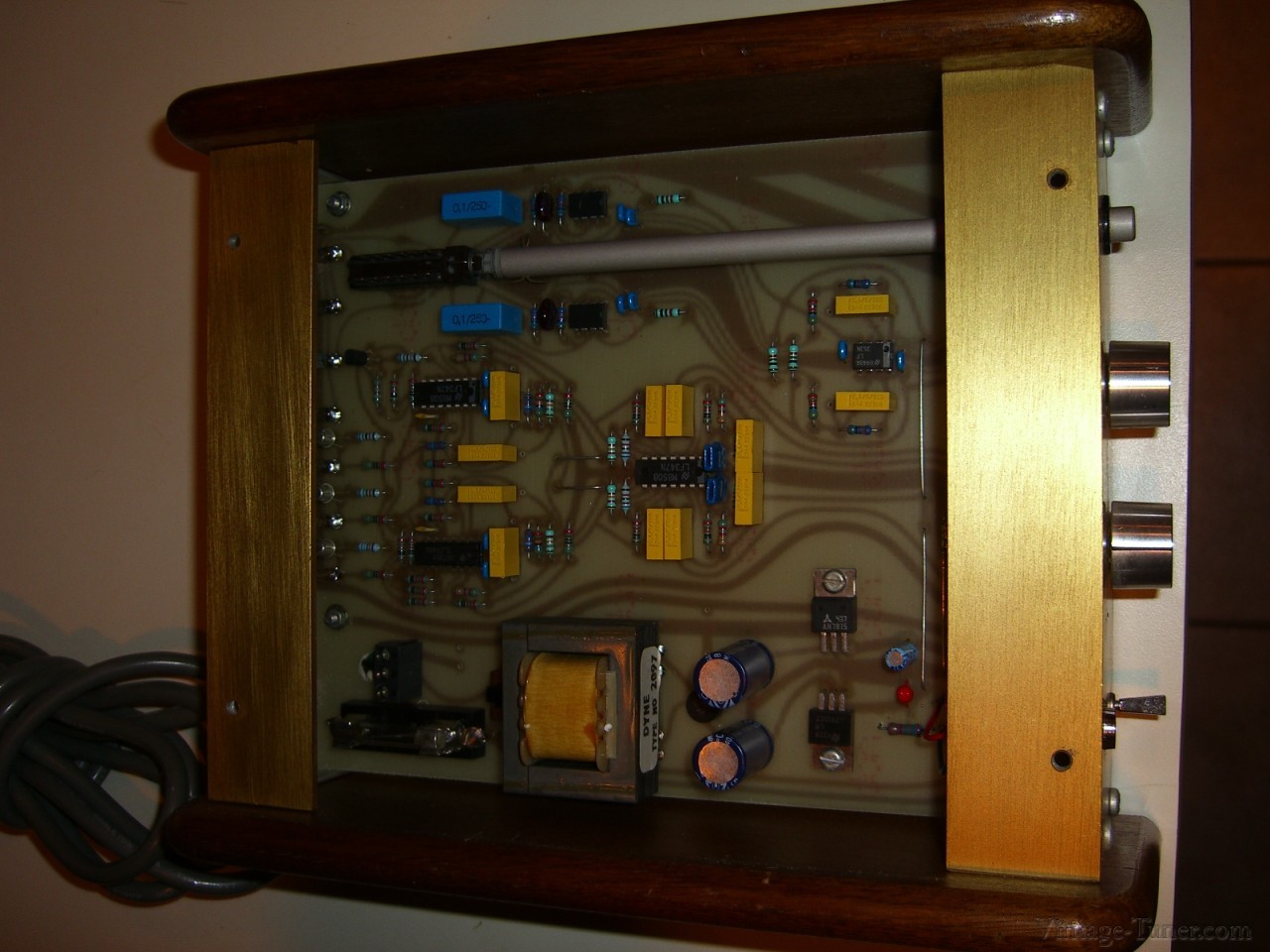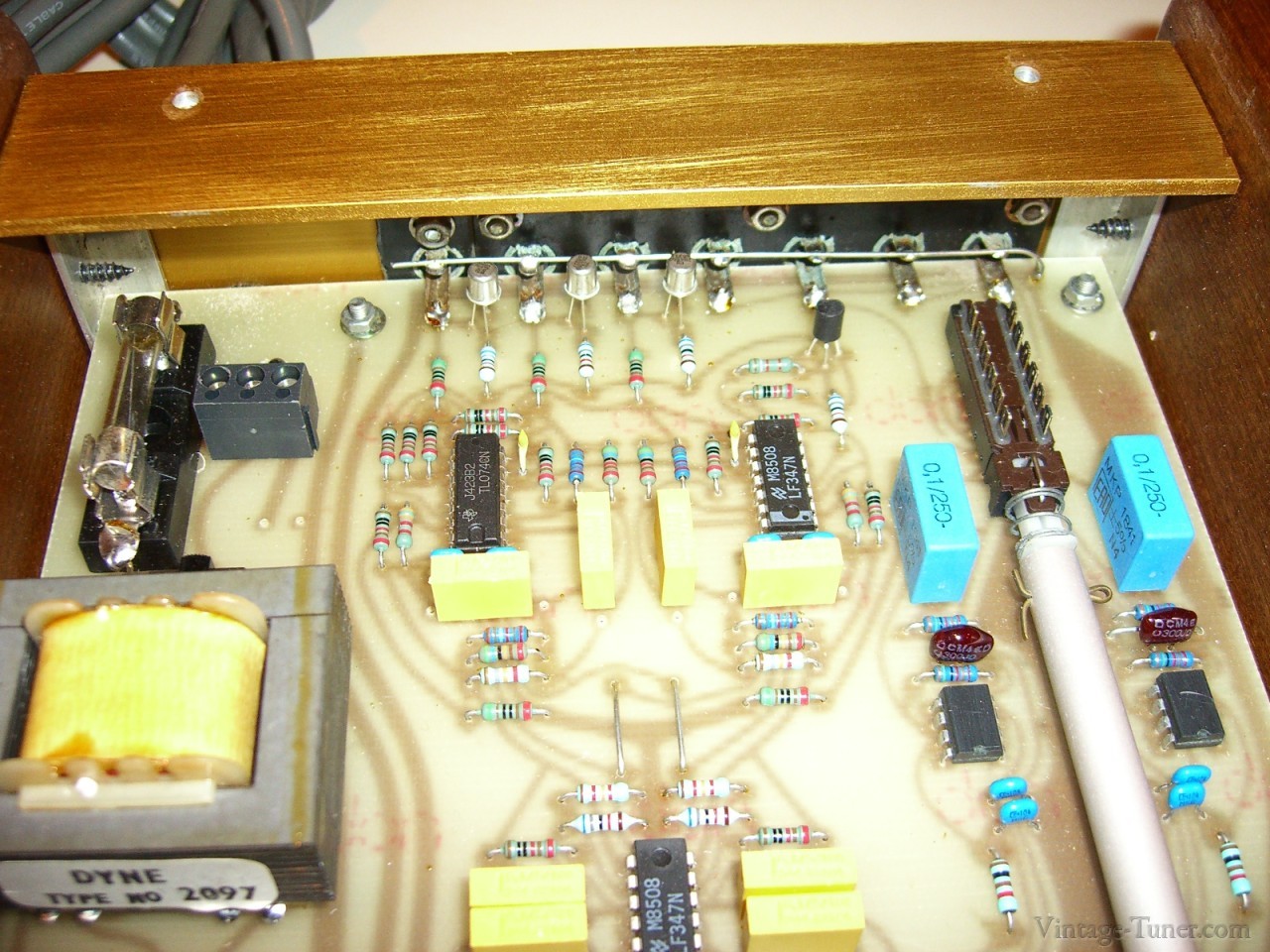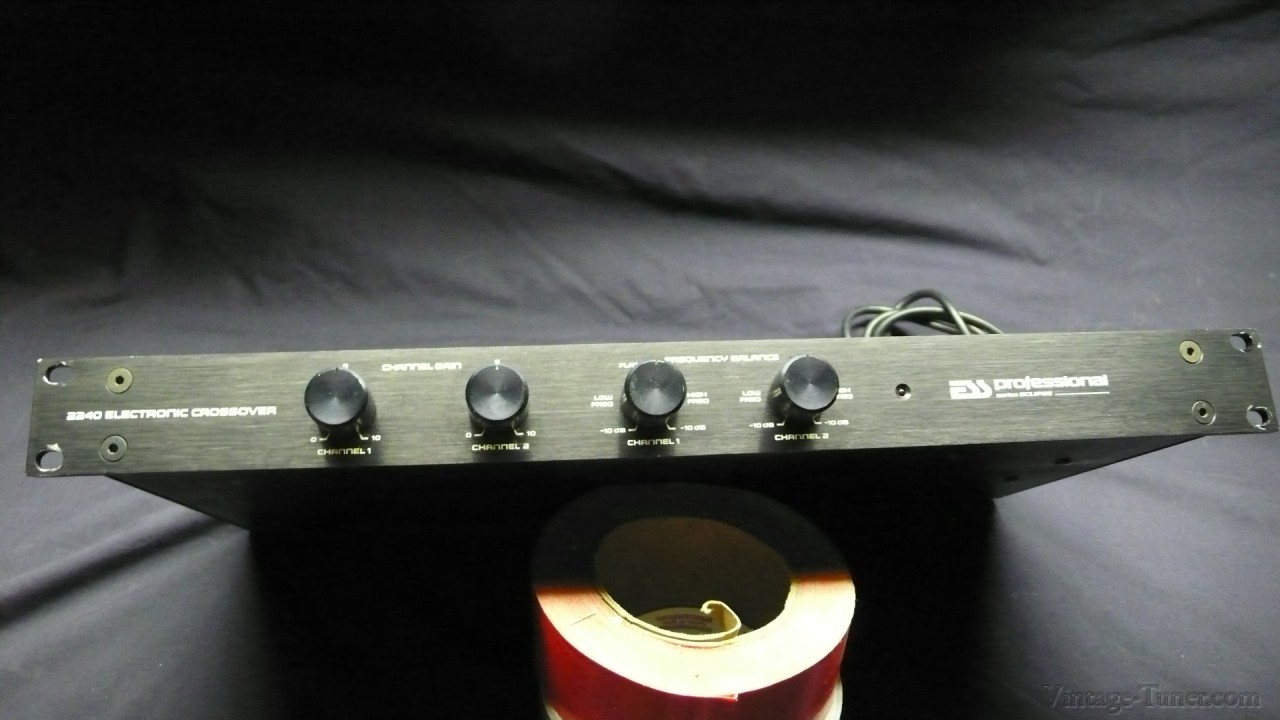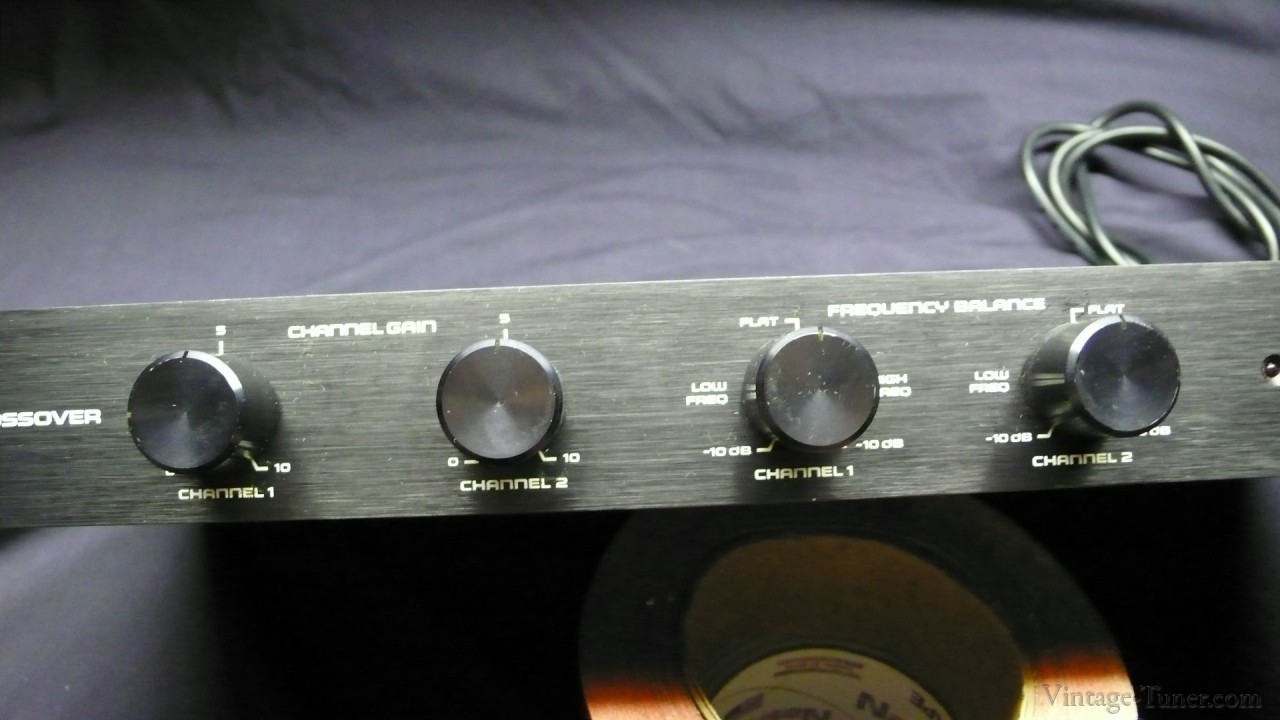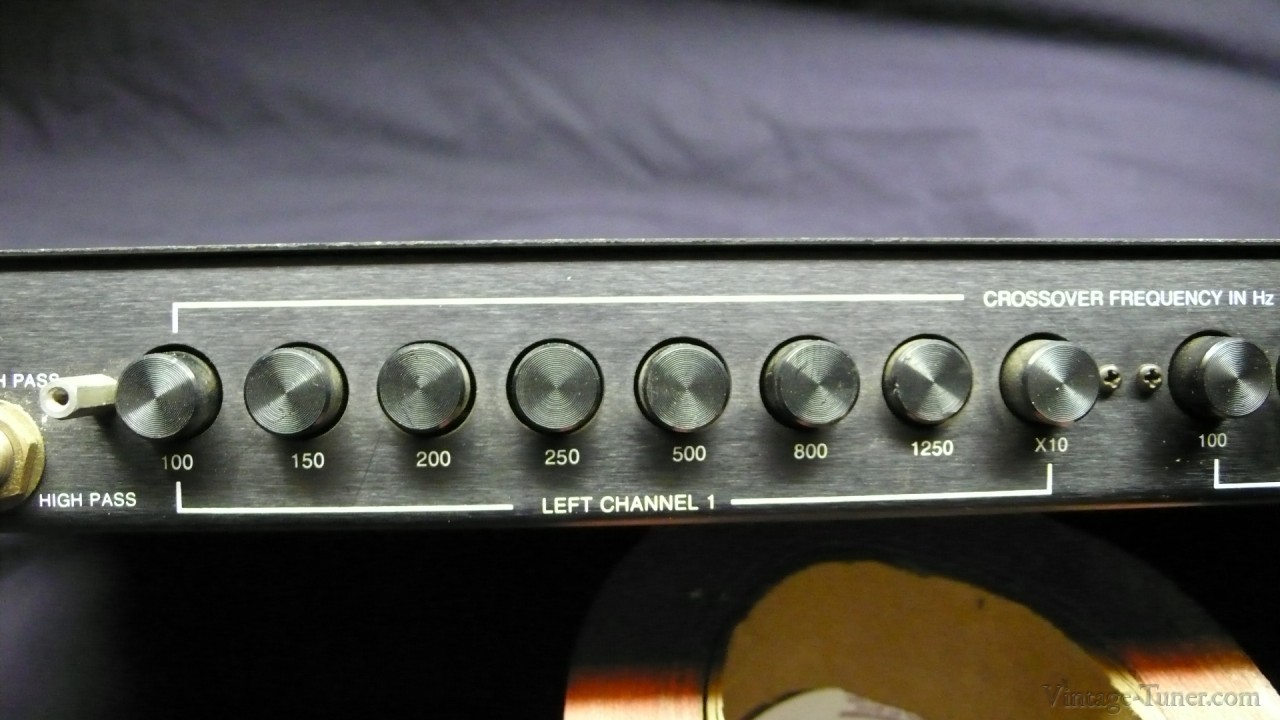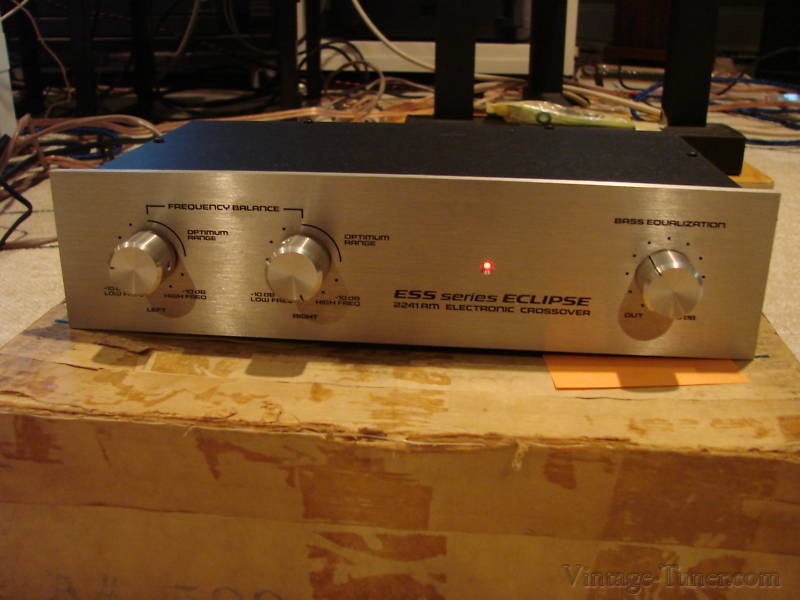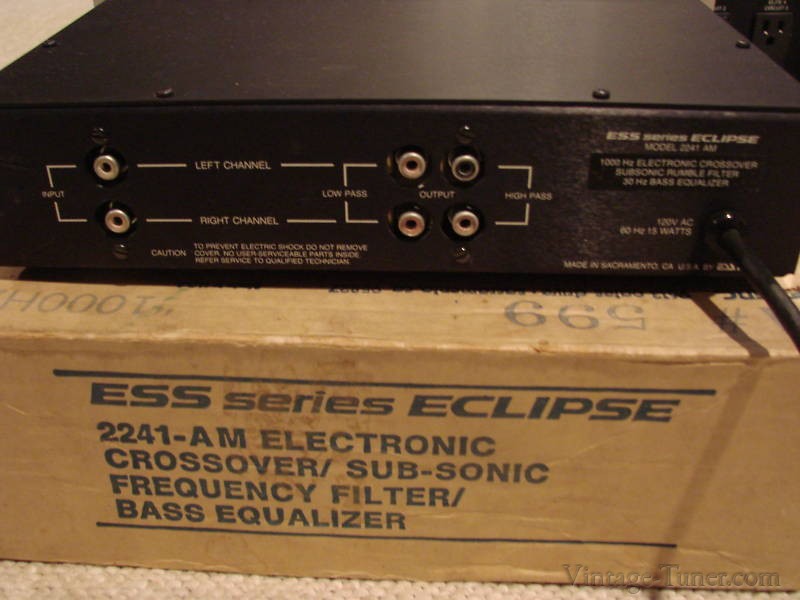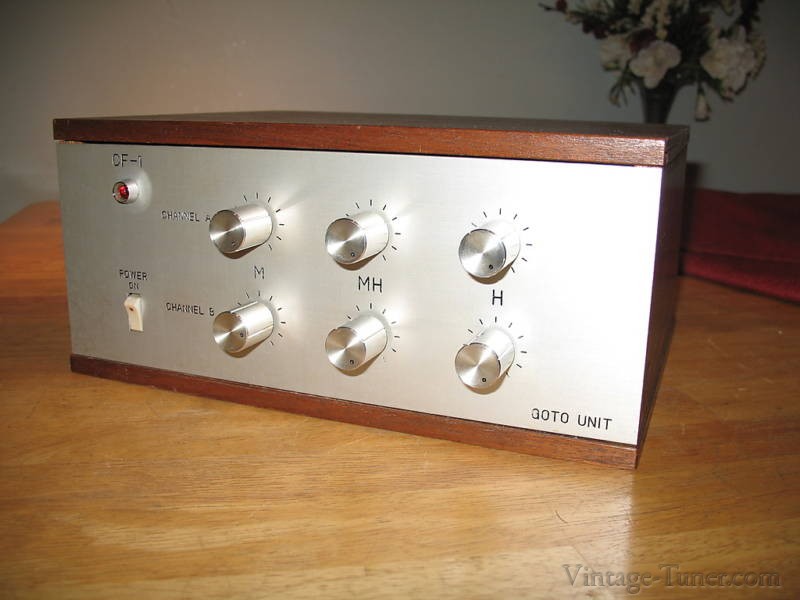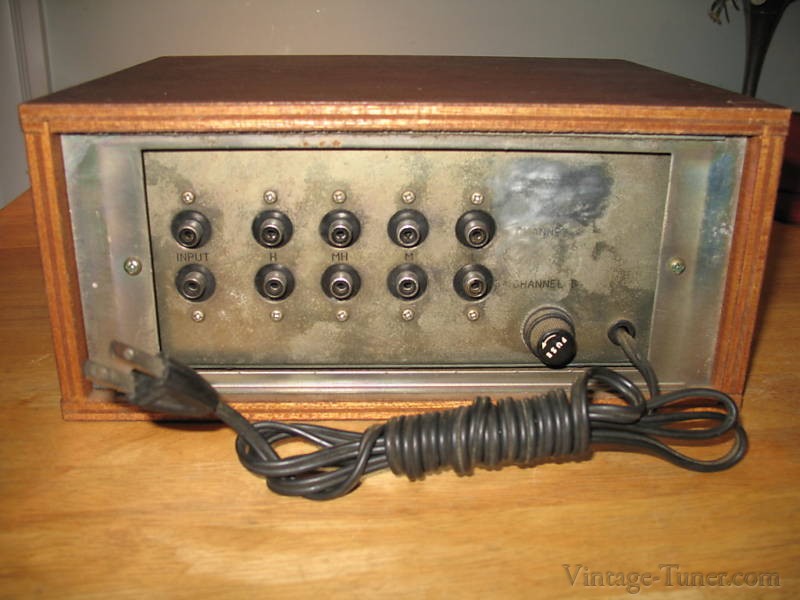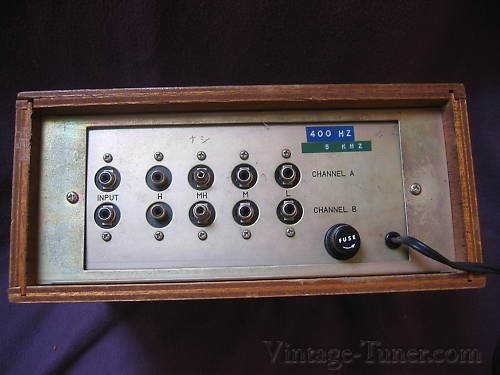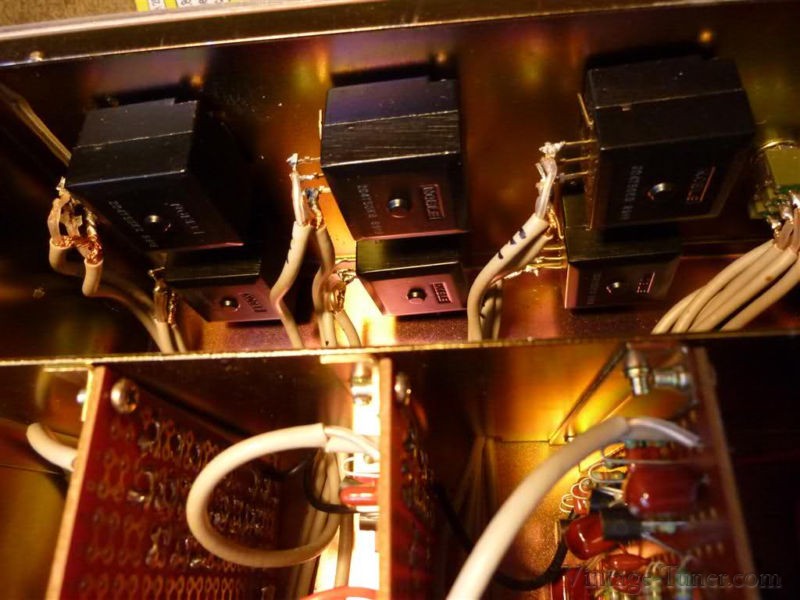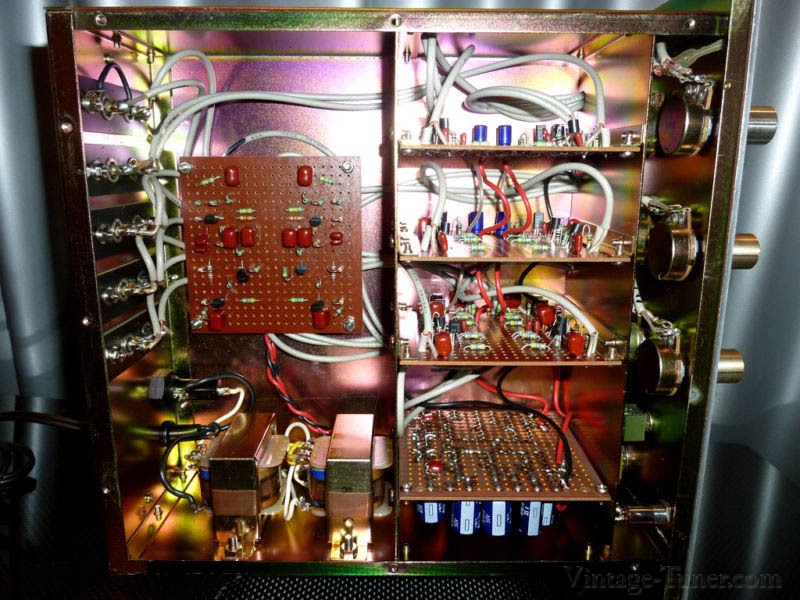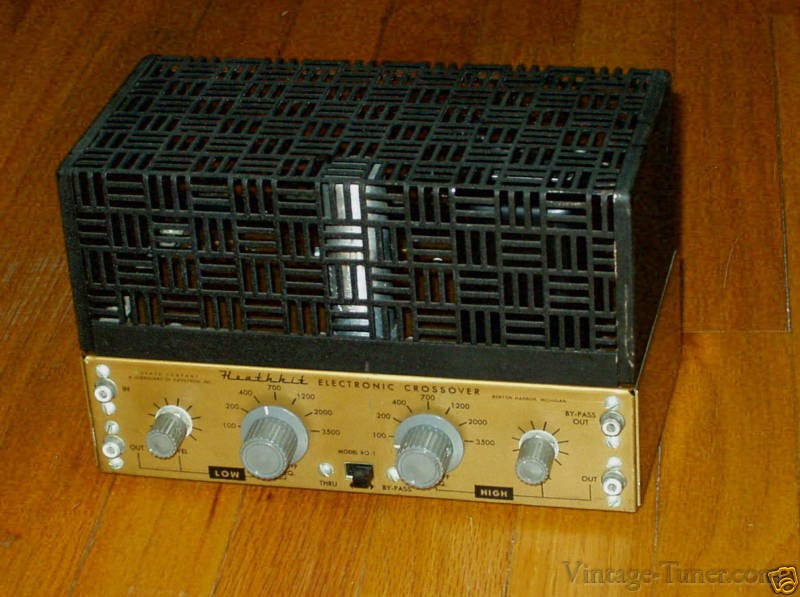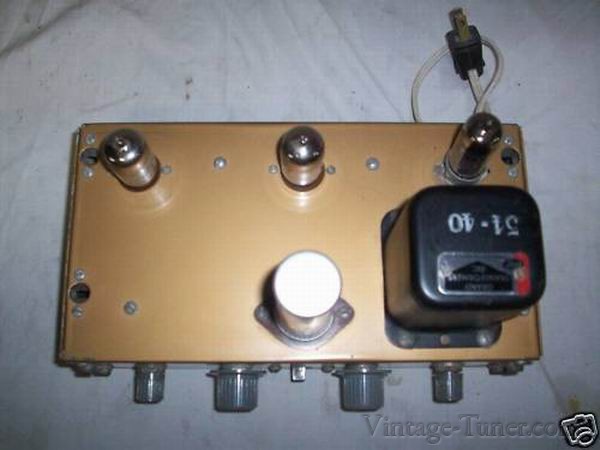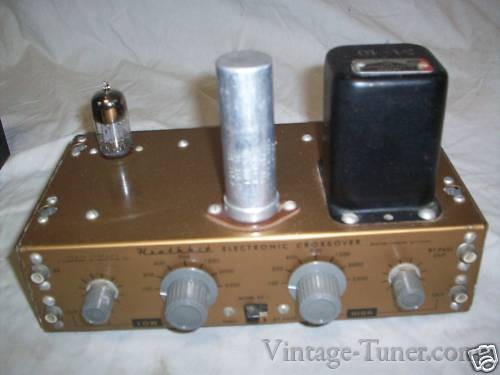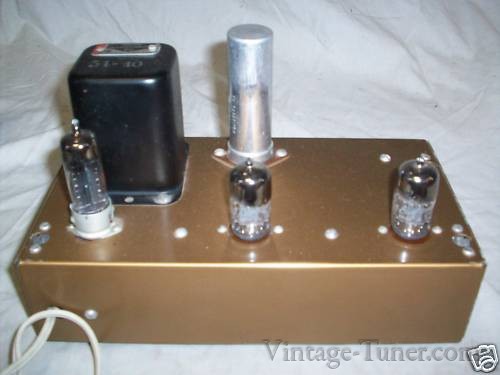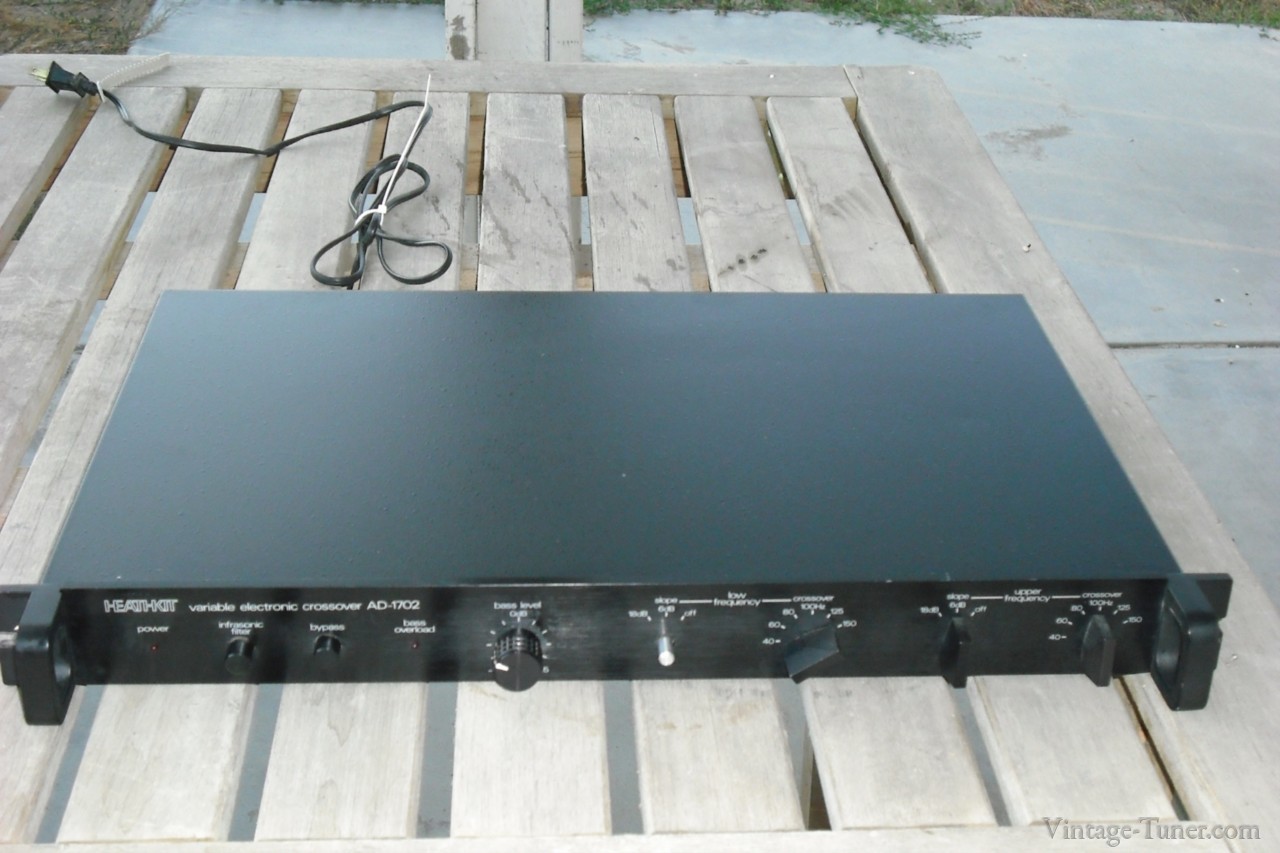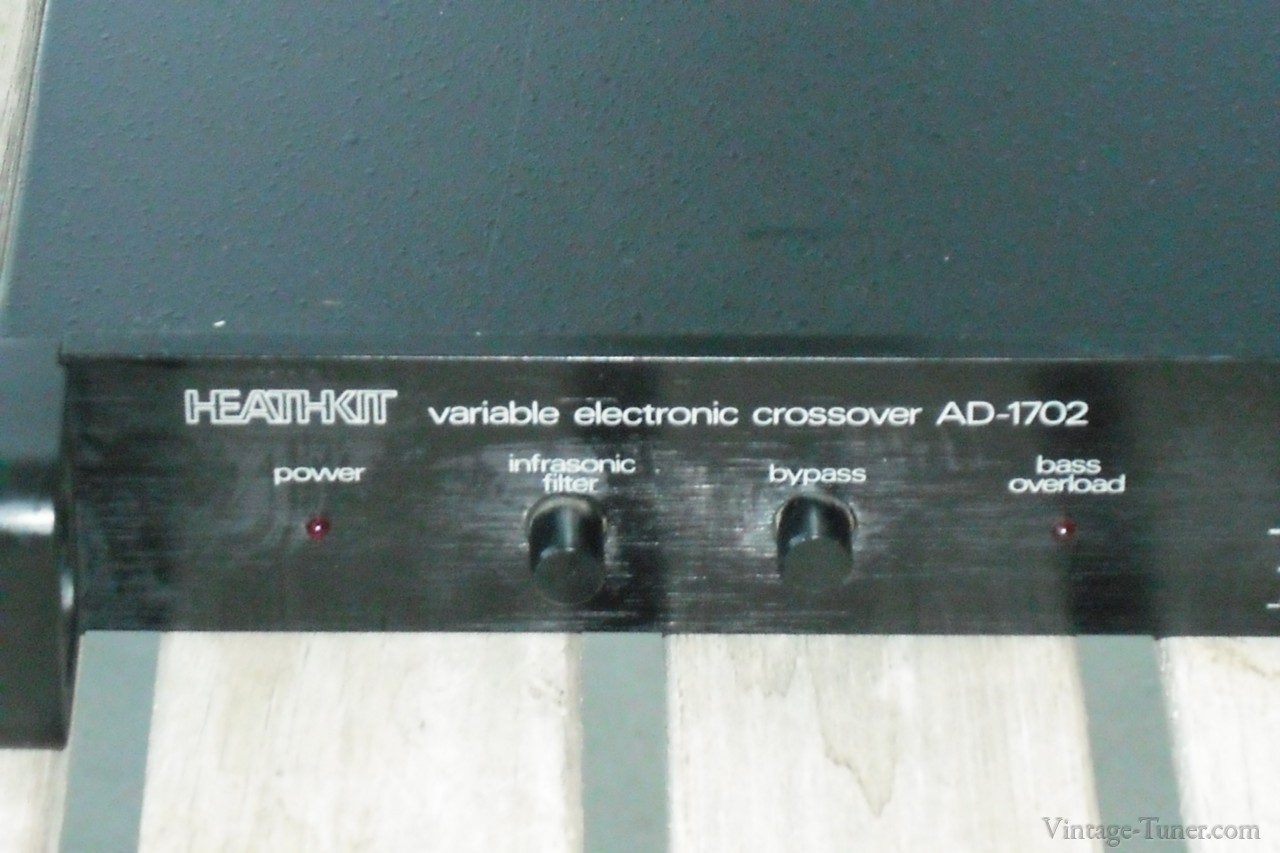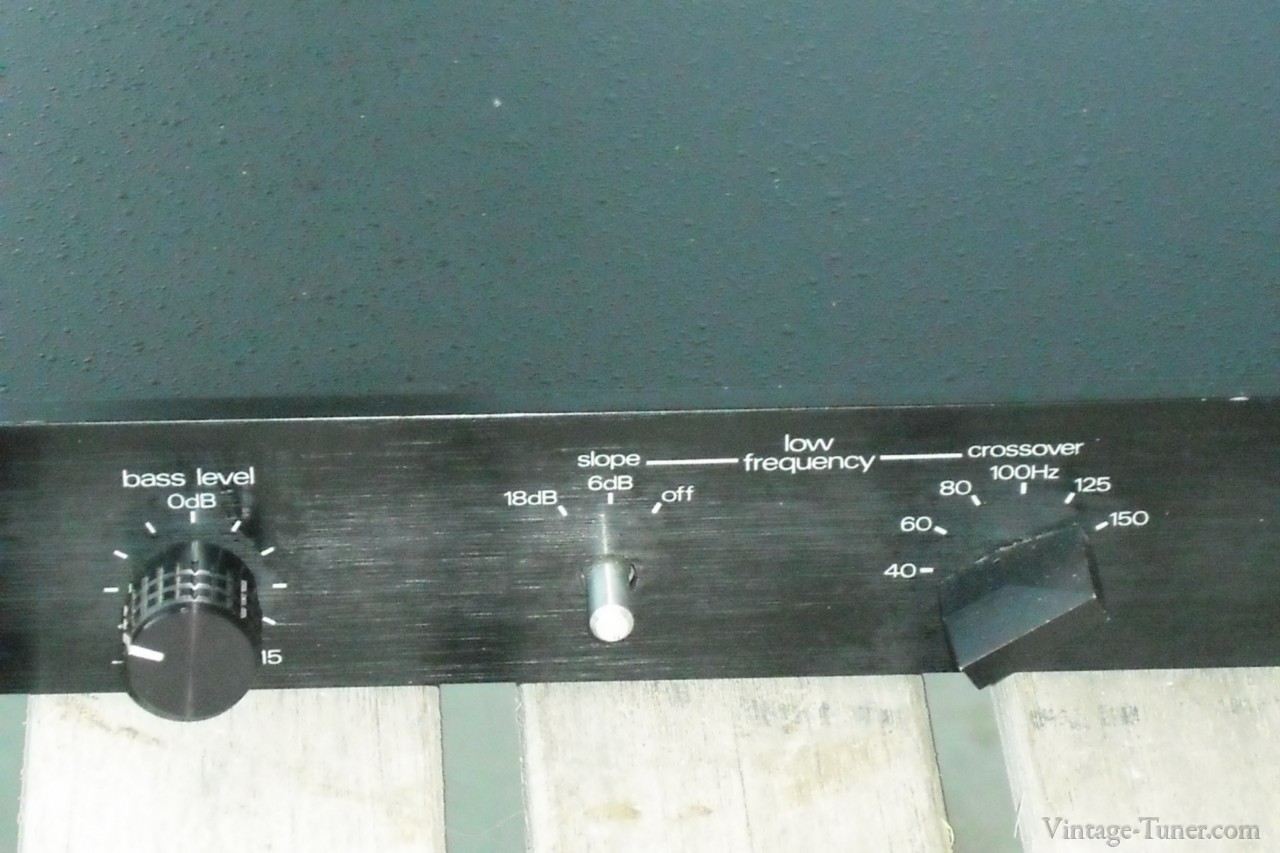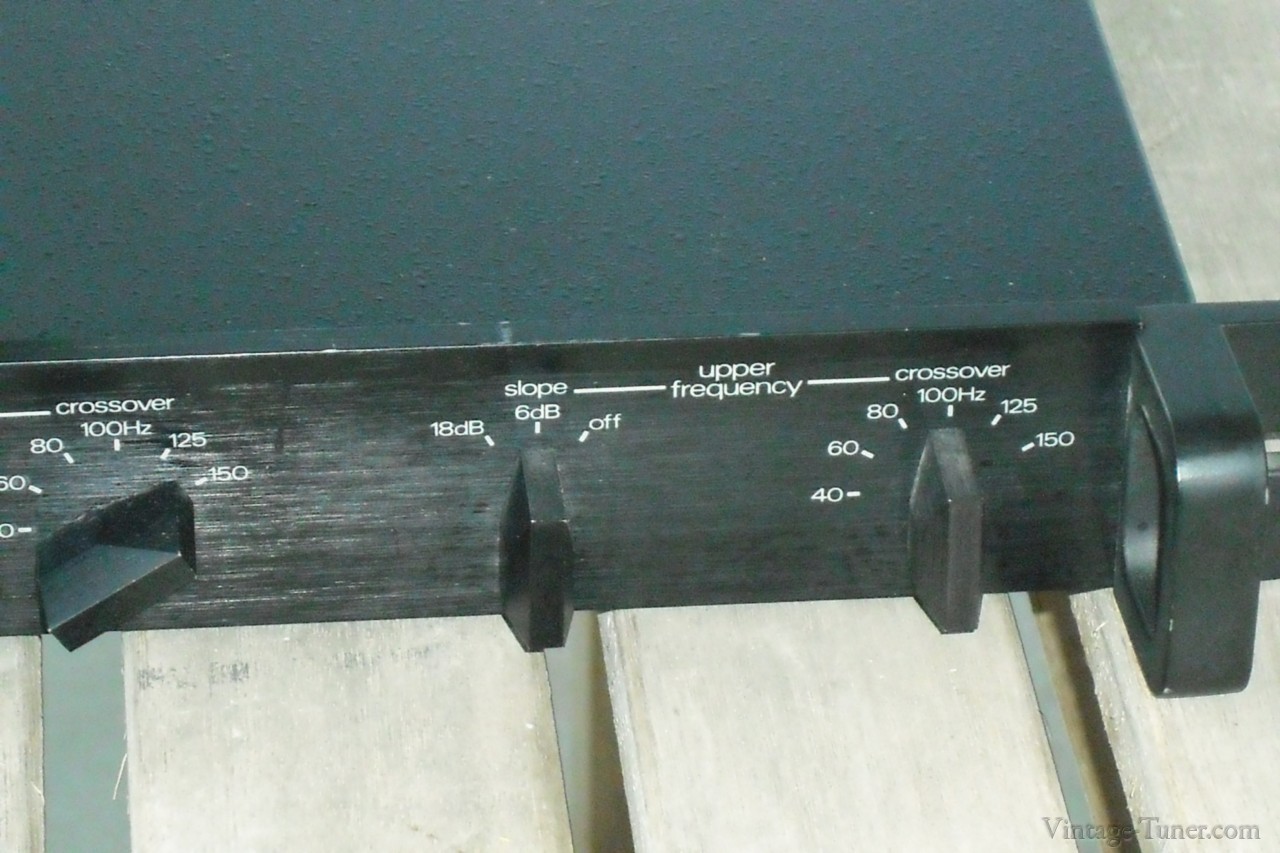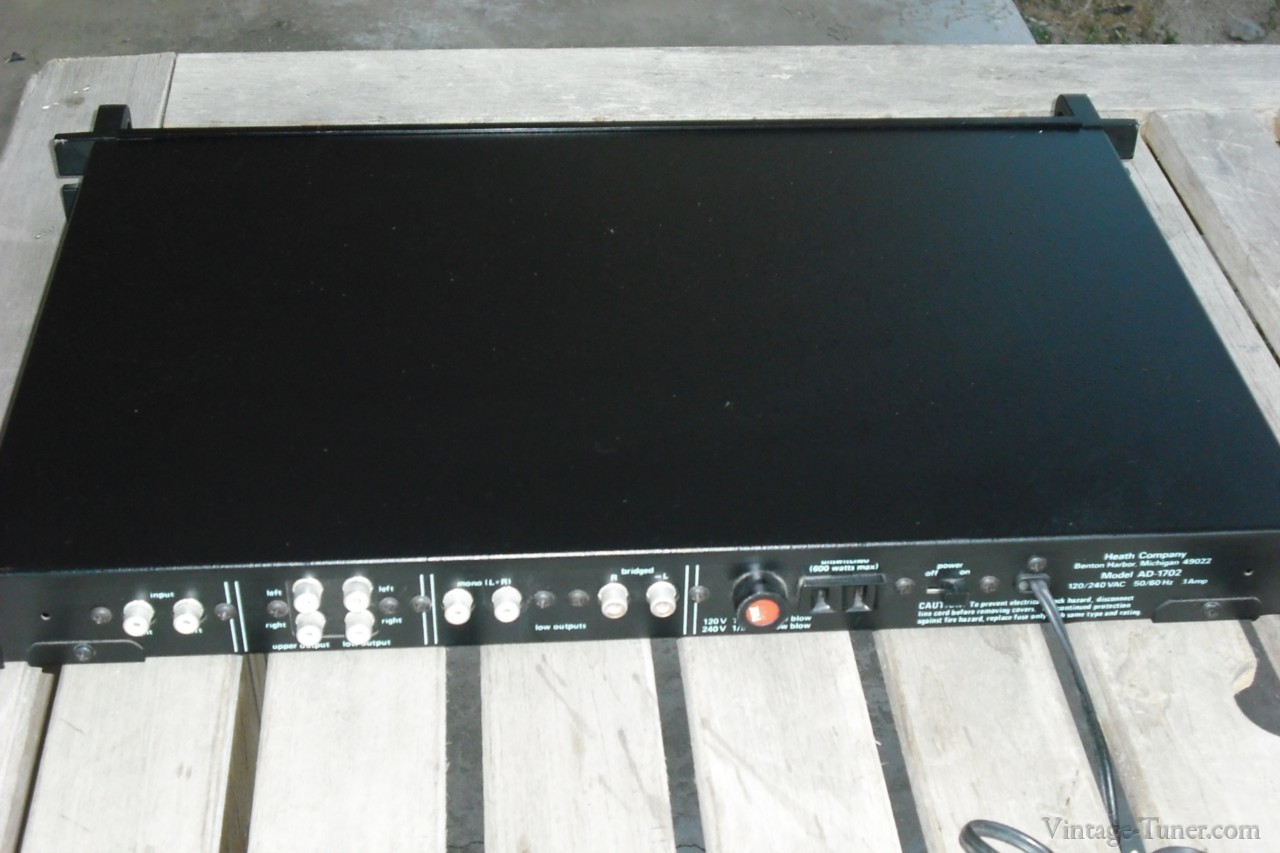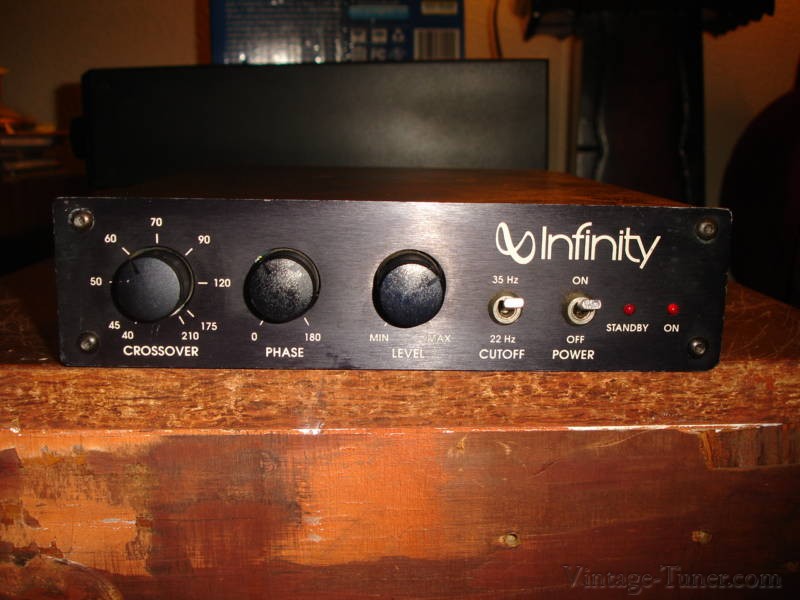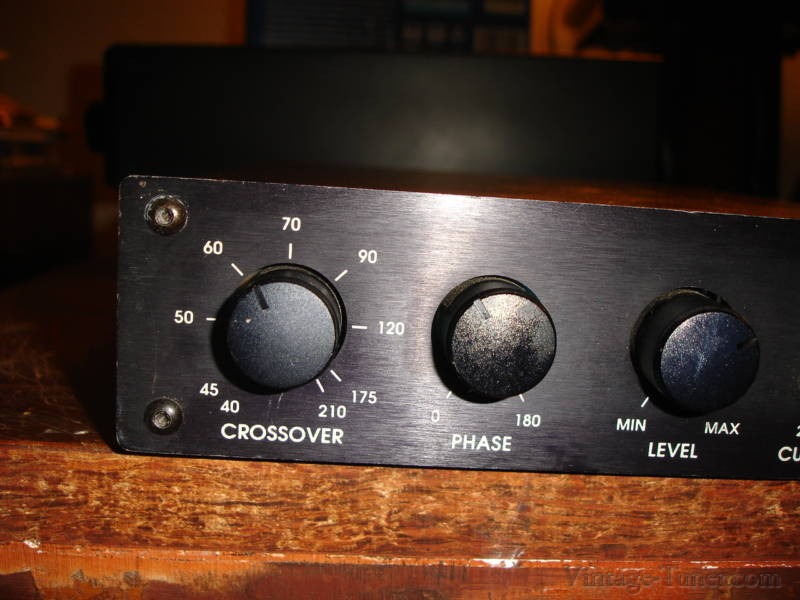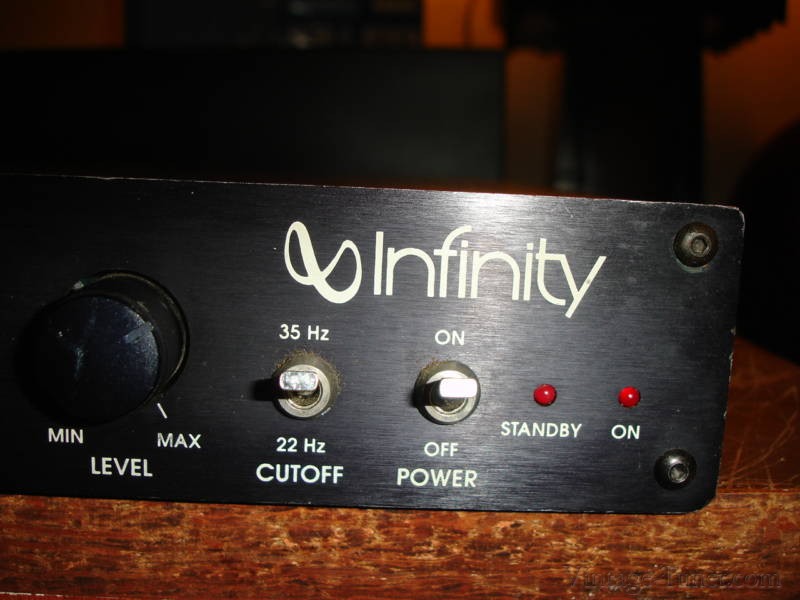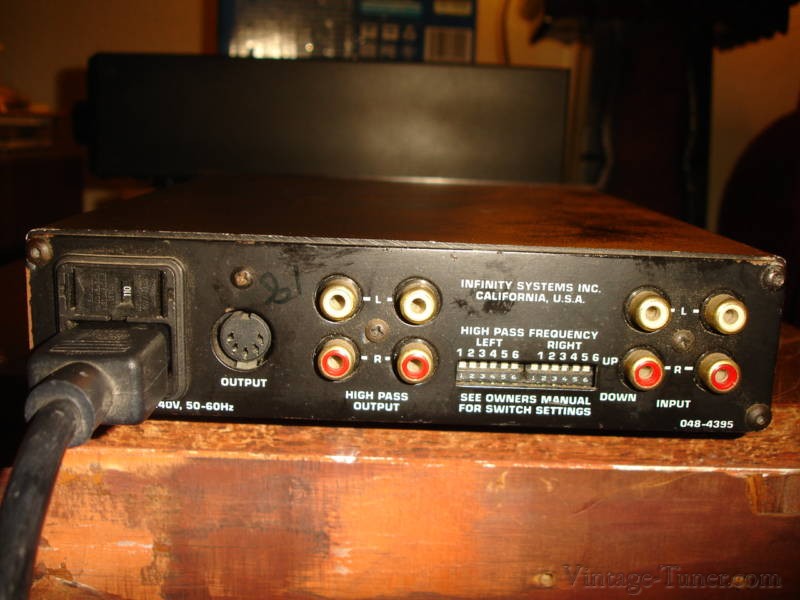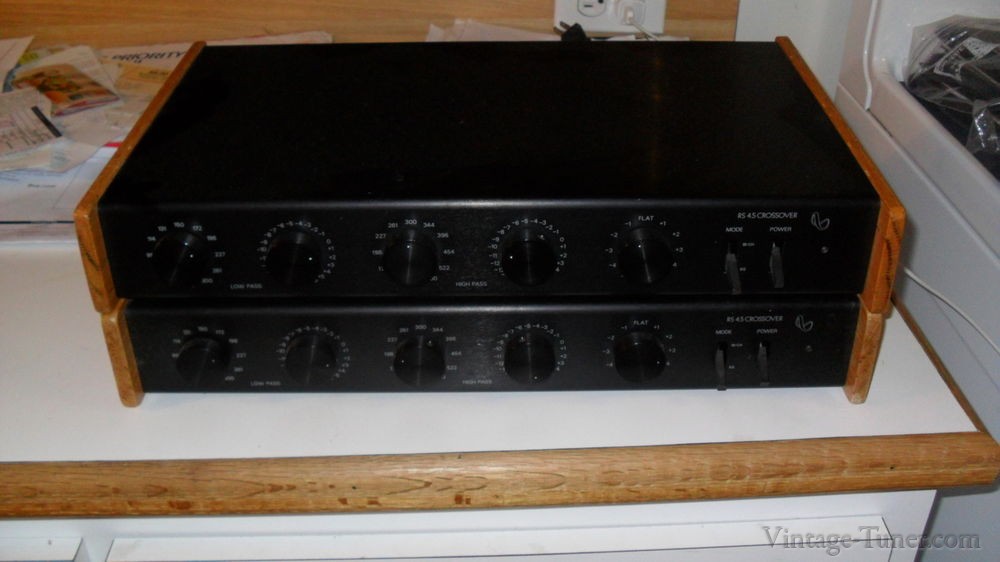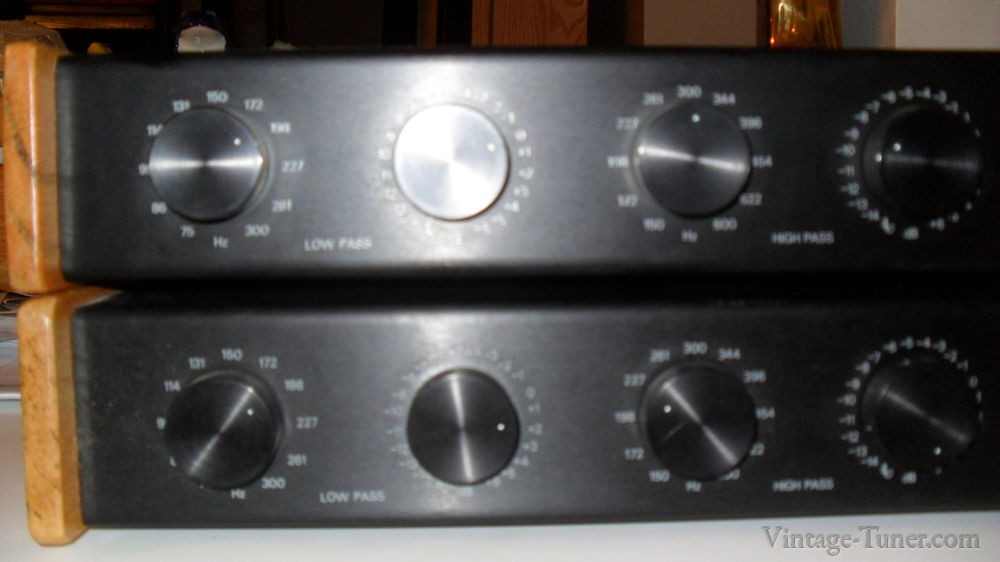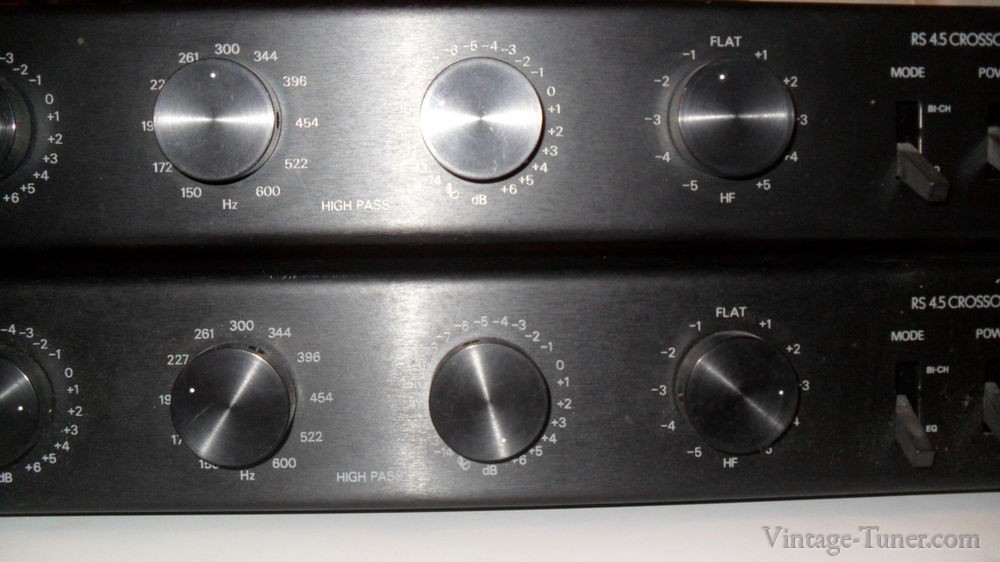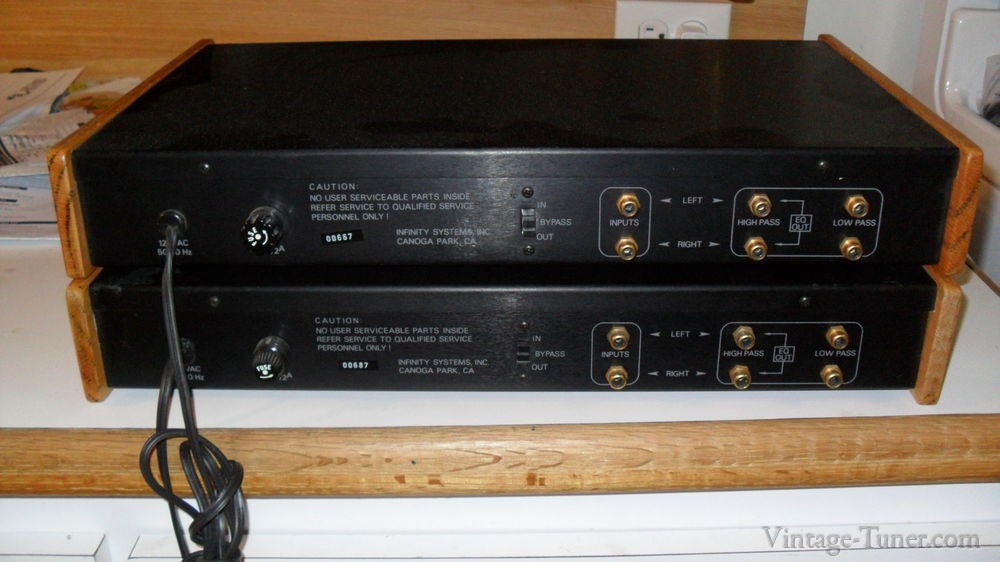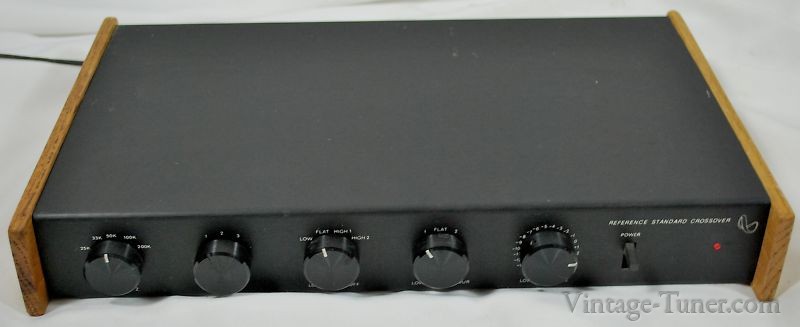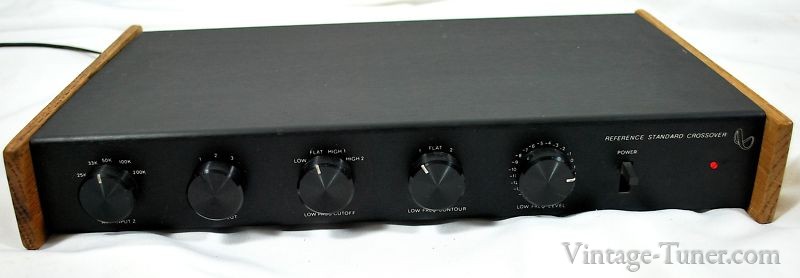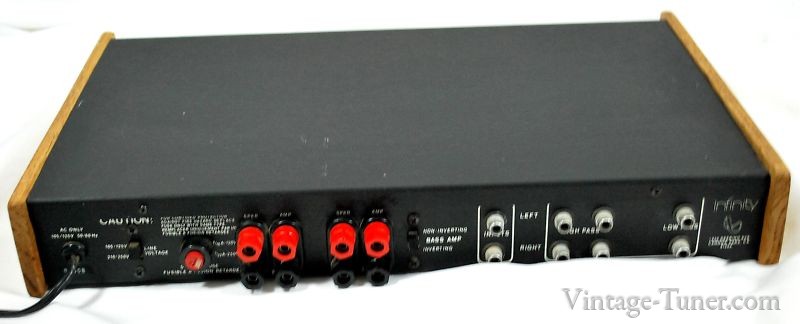filtres actifs
modeles analogiques années 60 à 80

Aurex Bryston Dahlquist Duntech
ESS Goto Heathkit Infinity
Aurex - Toshiba SD 77
They are the channel dividers which adopted the arithmetic circuit system which makes the high pass characteristic and the low pass characteristic in one circuit.
Class-A direct-current operational amplifier IC is adopted as an active element. A large nakedness profit can be taken, by the time what is called the rebound characteristic can be disregarded practically, it can stop, and the ideal damping characteristic is acquired.
The signal to noise ratio of 100dB and 0.002% (20Hz - 20000Hz) of a distortion are realized by carrying out discrete composition of the mixer part of the input straight signal which constitutes the central part of an arithmetic circuit, and the signal passing through an integration return circuit.
The change of 6 dB/oct and 12 dB/oct is possible for a barrier property.
By the circuit system of SD-77, although the operation part which determines crossover frequency has been independent and frequency changes by capacity and a gain, it can decide only by change of the resistance of gain control by making capacity into a steady value. Thereby, the continuation variable of a crossover is made.
The Detent type high precision metal tunic volume of 11 contacts is adopted, and, thereby, the high region and low-pass change of 11 points each is possible at SD-77.
By changing the dumping characteristic (Q characteristic), it is possible to change the damping characteristic of the cutoff frequency neighborhood.
It can use also as dividers of 2ch by using only one side of low-pass and each crossover point of a high region.
The level control of each zone independence of low, inside, and quantity is carried.
Buffer amplifier is formed and sent out to the output stage.
100 ohms of the resistance for protection become an Output load impedance as it is.
Reed relay with quick working speed is used for the clicking noise prevention at the time of power switch ON/OFF.
Bryston 10B
Totalement symétrique et double mono, avec pas moins de 12 fréquences de coupures possibles en 6-12-18 dB/oct.
Dahlquist DQ LP1
Un peu particulier dans la gamme des filtres actifs, le DQ LP1 est composé d'un filtre actif passe bas pour les boomers et d'un passif passe-haut.
C'est un 18 dB/oct, 13 fréquences de coupures de 40 à 450 hertz et il peut s'utiliser, en faisant la somme des canaux gauche droite, en mono sur un HP de grave.
DESCRIPTION:
The Dahlquist DQ-LP1 is a unique line-level crossover which combines an electronic lowpass filter with a completely passive high filter. The LP1 is intended primarily for integrating a subwoofer into an otherwise full range loudspeaker system. It may also be used in the bi-amplification of a single loudspeaker system where the crossover point is from 40 to 400Hz. As with other electronic crossovers, the LP1 is connected between the preamplifier and the two power amplifiers; one amplifier feeds the main speaker, the other drives the subwoofer(s). (Please note: The LP1 requires the use of a second power amplifier.) The active low-pass section, which feeds the subwoofer amplifier, is continuously variable from 40 to 400Hz and provides a cut-off rate of 18dB per octave. This steep slope is achieved through a non-ringing, staggered arrangement of 6-12-18 dB/octave slopes, preserving bass transients. Distortion is exceptionally low, measuring 0.005% THD. Of particular importance in a device of this type is the performance of the high pass section which feeds the main power amplifier. Any distortion introduced in this stage will noticeably degrade the important middle and upper frequencies. In order to avoid such degradation, the high pass section of the LP1 is purely passive. Distortion is unmeasureable by normal techniques. If it were possible to measure the THD of the LP1’s high-pass section, we would expect a figure like 0.000001% Since the high-pass section is passive, it may be necessary, depending on the desired crossover frequency and the main amplifier’s input impedance, to insert a capacitor or resistor into the terminals provided on the LP1’s printed circuit board. We have designed this to be simple enough for the average consumer to do himself—instructions and a kit of resistors and capacitors are provided with each unit—but, of course, the service technician may be called on in some cases. The high-pass section can be set for any frequency from 40 to 400Hz; its slope is 6dB/octave. This combination of active and passive circuitry insures the sharp cut-off and ‘’tuneability’’ required to best integrate a subwoofer into a loudspeaker system, while not degrading main speaker performance. The Owner’s manual provides complete instructions for the hook-up and tuning of the LP1, including an easy to use chart showing the appropriate combination of resistors and/or capacitors to achieve a variety of crossover points.
CIRCUIT DESCRIPTION:
NOTE: Left low frequency channel described; right channel identical. The input signal is direct coupled through an audio taper level control RV1 and is then AC coupled through C2 to the non-inverting input of Z2A. Z2A provides 14dB of flat gain set by R1 and R2 in addition to continuously variable low frequency equalization of +5dB maximum at 20Hz controlled by RV2 and C5. D.C. offset control is provided by trimpot RT1 and is adjusted for ± 2 millivolt D.C. offset with the frequency dial set to 60Hz. C3 provides 100% D.C. feedback around Z2A for maximum stability. RV3 is the triple ganged frequency control which in conjunction with C6, C4 and C7 provides for continuously variable crossover frequencies from 40-400Hz at the -3dB point. Z2A, Z1A and Z1B are non-inverting unity gain buffers which eliminate interaction between the three R-C filter sections. Z3A provides active unity gain summing of left and right low frequency signals and Z3B is a unity gain phase inverter which phase corrects the center channel output signals to match left and right low frequency outputs. Z6 is a precision dual tracking voltage regulator which powers both channels. D.C. outputs are held to ± 15V ± 5%. The high-pass section is passive and provides 6dB per octave slopes whose frequency is fixed by C1 and the amplifier input resistance. This frequency is set for a given amplifier input resistance by connecting additional capacitance to the Cx terminals or additional resistance to the Rx terminals. The front panel frequency control does not effect the high pass frequency. A chart showing typical values for Cx and Rx is contained in the LP1 owner’s manual. Film capacitors (polyester, polyproplene, polycarbonate, etc.) and carbon film or metal film resistors are recommended for this application. Push button switch S1 allows complete passive defeat of the highpass section and muting of the low frequency section to instantly restore the system to single amplifier operation.
Duntech IB-20
Filtre actif pour caisson de basse, en mono ou stéréo.
ESS 2240 AM
Filtre actif 2 voies avec fréquences de coupures 100/150/200/250/500/800/1250 hertz avec coéfficient 10X - 12dB/octave
ESS Series Eclipse 2241 AM
Fréquence de coupure fixe à 800 hertz 12dB/oct
GOTO UNIT CF 1
Filtre 4 voies, fréquences fixes modifiables par changement de composants.
Hearthkit XO-1
7 fréquences de coupures pour ce filtre à tubes en 2 voies.
100-200-400-700-1200-2000-3500 hz
Hearthkit AD-1702
Filtre 2 voies pour caisson de grave avec passe-haut, 6 - 18db/oct, fréquences de coupures: 40-60-80-100-125-150 Hz
Infinity
Filtre actif 2 voies, passe bas sélecteurs en façade, fréquences de coupures 40-45-50-60-70-90-120-175- & 210 hz.
Passe haut par switchs à l'arrière.
Filtre probablement conçu pour un modèle de la gamme d'enceintes Infinity.
Infinity RS 4.5
Filtre actif 2 voies de 75 à 600 Hz, avec réglage du gain à la fréquence de coupure
Infinity RS 1B
Filtre actif pour enceintes Infinity RS 1 - RS 1B et Kappa 9
This is a rare RS1b electronic crossover made by Infinity. These came standard with the RS1 and RS1b systems.
I have also sold one before to a gentleman who used it with his Kappa 9s.
This can be used with other setups. Please read the specs I wrote out below to see if this unit is compatible with your setup.
Here is a rundown of some of that information:
The Reference Standard Ib electronic crossover unit is used to divide the bass and the mid/high frequencies and feed the proper frequencies to their appropriate amplifiers and transducers.
The unit contains an active low-frequency crossover (low-pass circuit), a low-frequency feedback control circuit, and a passive midrange crossover (high-pass circuit). Additional equalization and level controls are also provided. The electronic crossover unit connects into the signal path between your preamp and power amplifiers.
This system MUST be properly connected to avoid damage to your amplifiers and/or speakers!
The functions of the front-panel controls are as follows:
The AMP INPUT IMPEDENCE (Z) control puts the appropriate value of capacitor in the series with the input of your mid/high frequency power amplifier.
This gives the proper crossover frequency for the midrange/tweeter sections. (This is necessary since the unit's high-pass section is passive.)
If two MONO amplifiers are to be used power the mid/tweeter sections they MUST have equal input impedences in order for the system to function properly.
If the input impedences(listed in the amp's owner's manual or available from the manufacturer) is other than one of the values listed at the control(after allowing a 20% tolerance), call Infinity's customer service deparment for instructions.{or post to Audiogon or another hi fi advice forum}
The LOW CUT control sets the lower limit of the woofers: 22 Hz in position 1, 30 Hz in position 2, 36 Hz in position 3. The LOW PASS CUTOFF control sets the upper limit of the woofers: 100 Hz in the "Low" position, 150 Hz in the "Flat" position, 200 Hz in the "High 1" position, 250 Hz in the "High 2" position.
The LOW FREQUENCY CONTOUR control affects the response of the woofers below 50 Hz: -3 dB at 30 Hz in position "1", +/- 0 dB in the "Flat position, + 3 dB at 30 Hz in position "2".
The LOW FREQUENCY LEVEL control acts as a volume control for the bass response and allows the output level of the woofer columns to be adjusted independently from the mid/tweeter sections.
The POWER INDICATOR LED glows when the electronic crossover unit is on.
On the rear panel of the unit, the A ›C › Line Cord plugs into a suitable source of power.
The VOLTAGE SELECT switch allows for use at 100 through 125 volts A.C. or at 200 through 250 volts A.C. To change the setting of the switch, loosen its two screws about a half turn, set the switch, and tighten the screws firmly.
The FUSE protects the unit from current overload. REPLACE THE FUSTE ONLY WITH THE SIZE AND TYPE SPECIFIED TO PROTECT YOUR WARRANTY.
If the fuse blows, the most likely cause is an incorrect setting of the voltage select switch. If the fuse blows repeatedly, and the switch is properly set, contact Infinity's customer service department for repair service immediately.
The AMO and SPKR connectors connect the low-frequency feedback control circuit to the amplified low-frequency signal.
The BASS AMP switch accomodates both inverting and non-inverting low-frequency power amplifiers.
Proper setting of this switch is an absolute must!
The INPUTS connect to the outputs of your preamp to provide the system its program material.
The HIGH PASS outputs are comprised of two sets of inputs: one set connects to the inputs of your mid/high-frequency power amplifier, while the other set is to be used ONLY at the advice and instructions of Infinity's customer service department.
The LOWS Pass outputs connect to the inputs of your low-frequency power amplifier.
For other specifics and trouble shooting, please refer to the link above that will connect you to an online owner's manual.
This unit has been tested and tests great. All of the knobs turn as they should and are free from static when you turn them.
The wooden ends are nice and the front and back faceplates and top show very little sign of use/wear.
It is easy to see this piece was taken care of. Please email me with any questions. It measures about 17" x 11" x 2 3/4".
